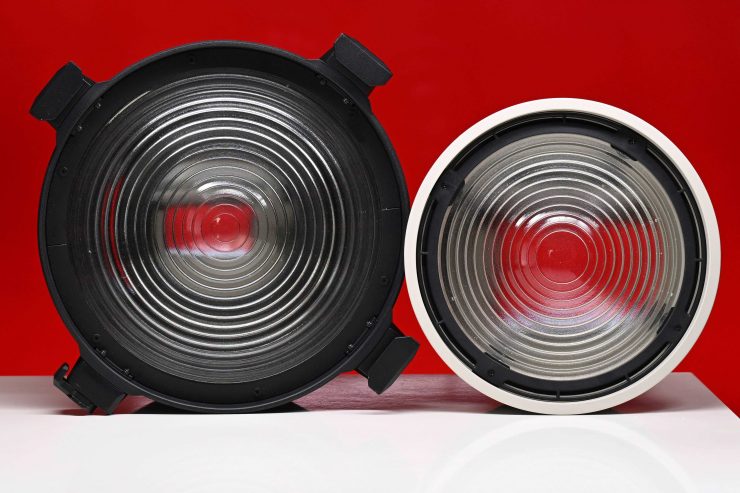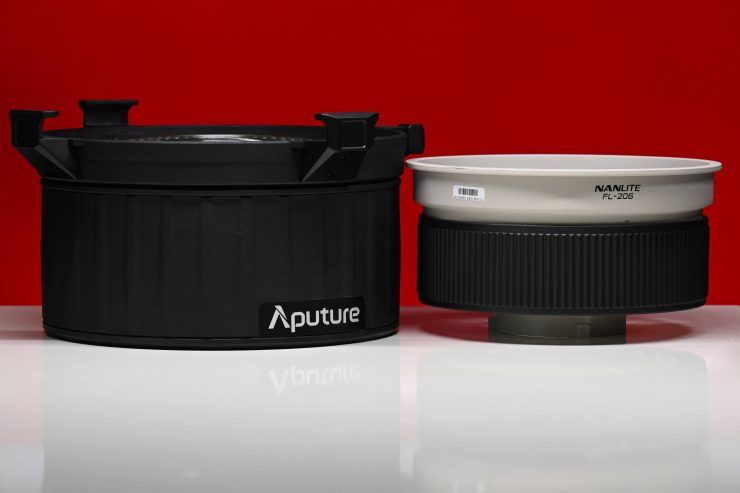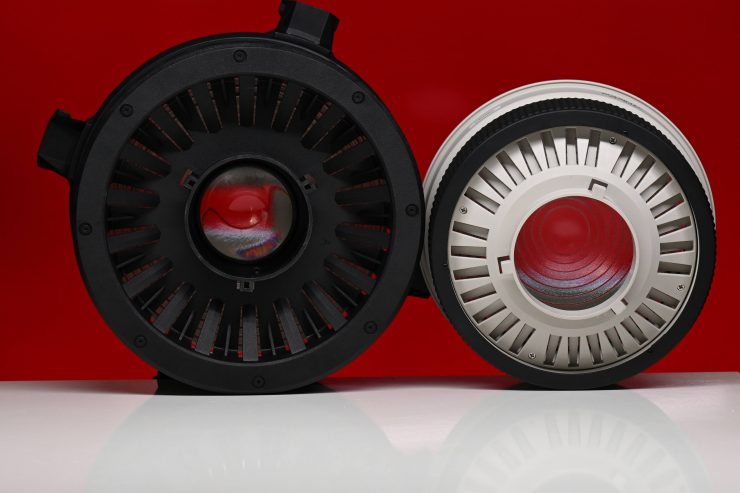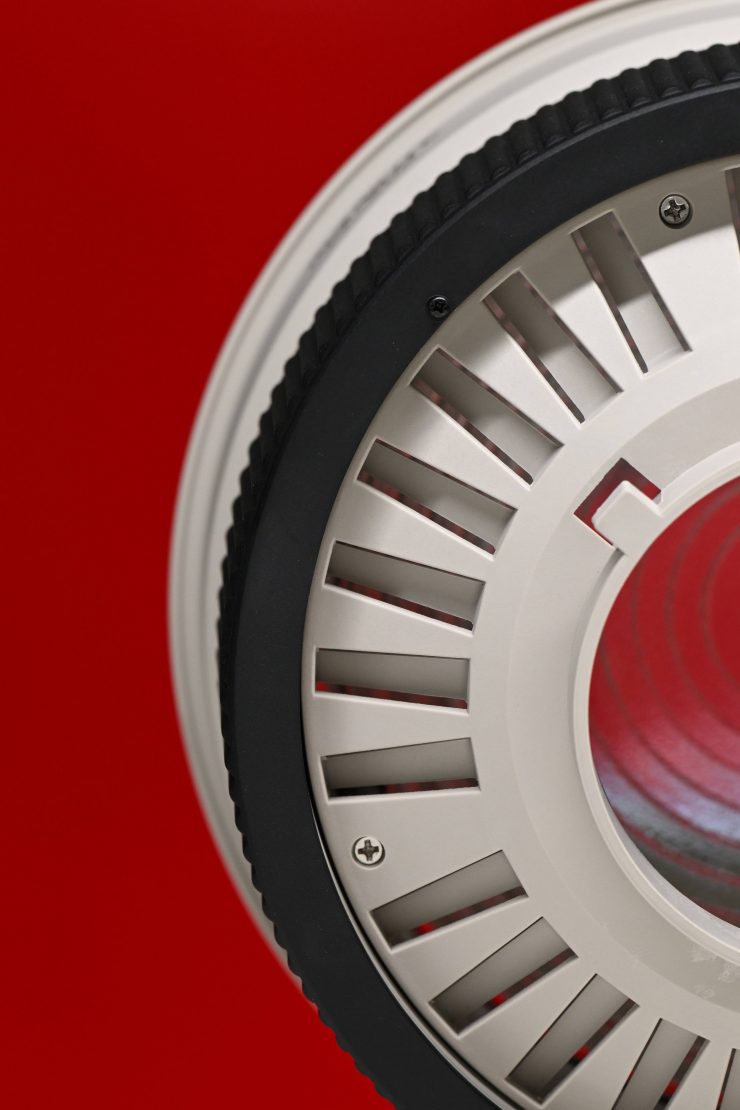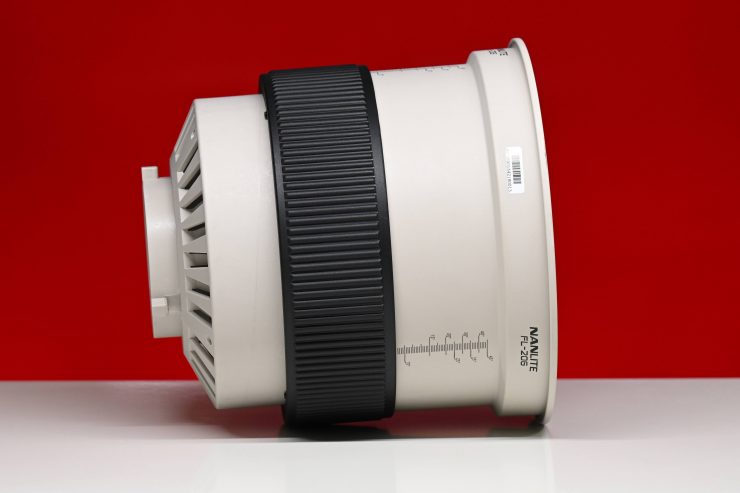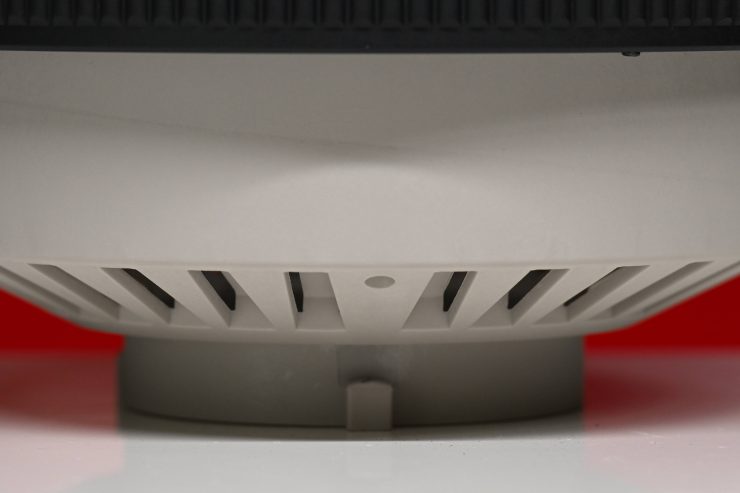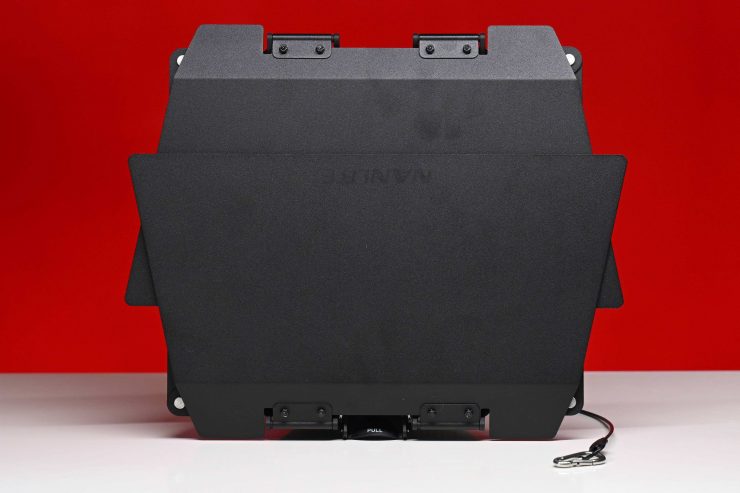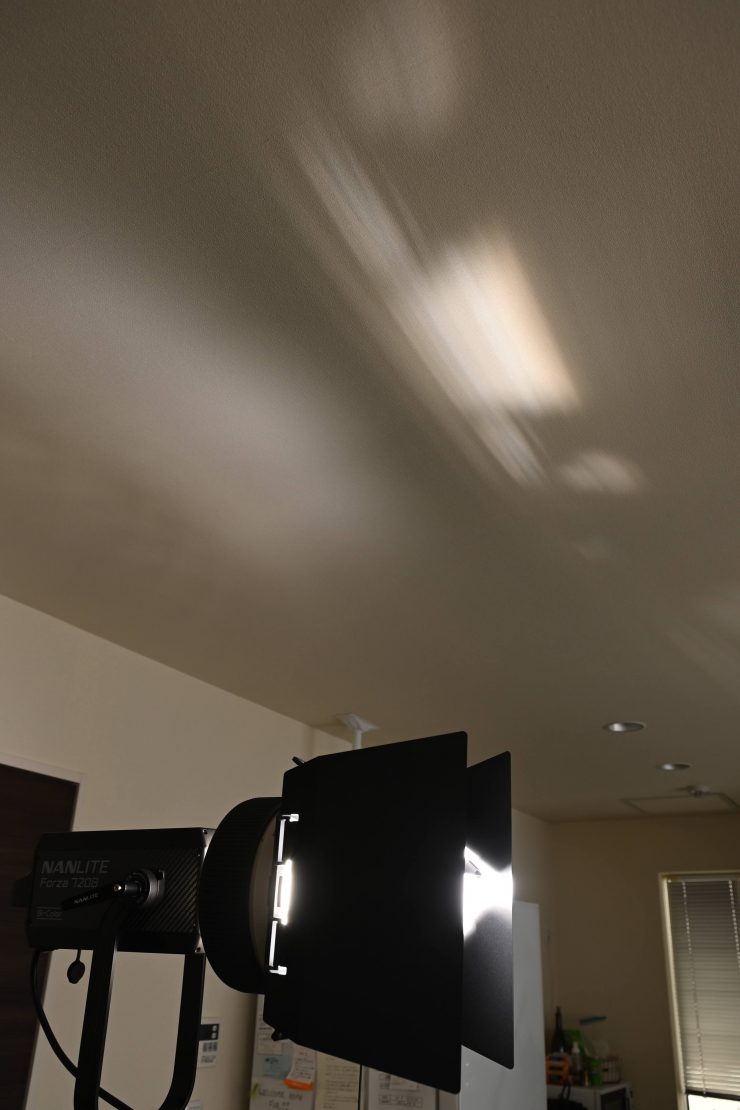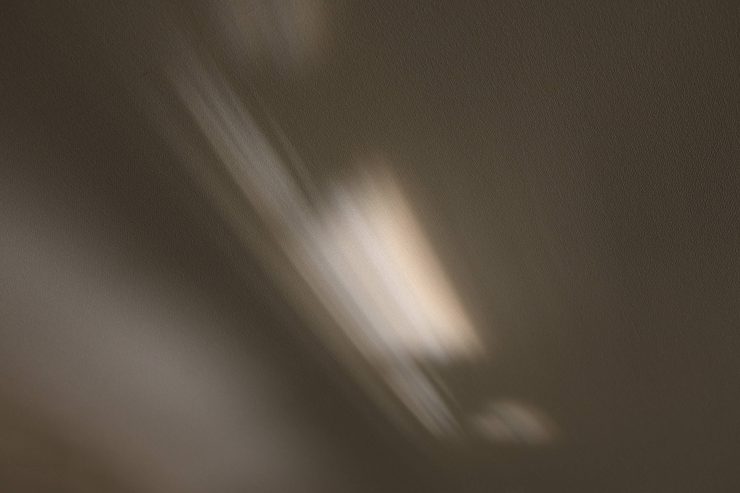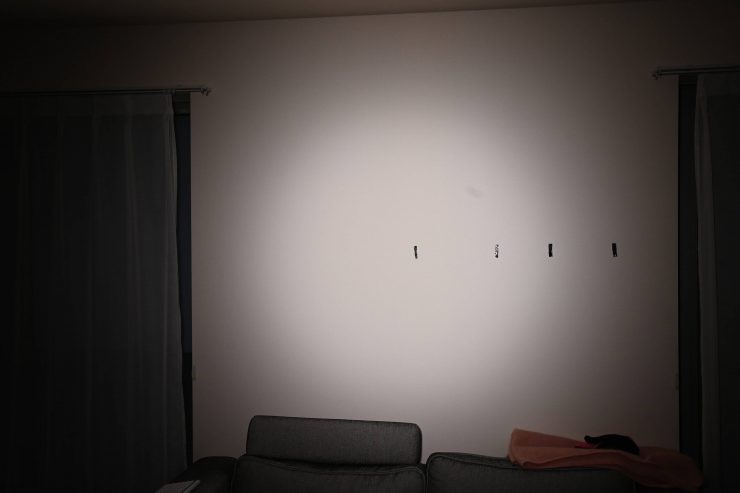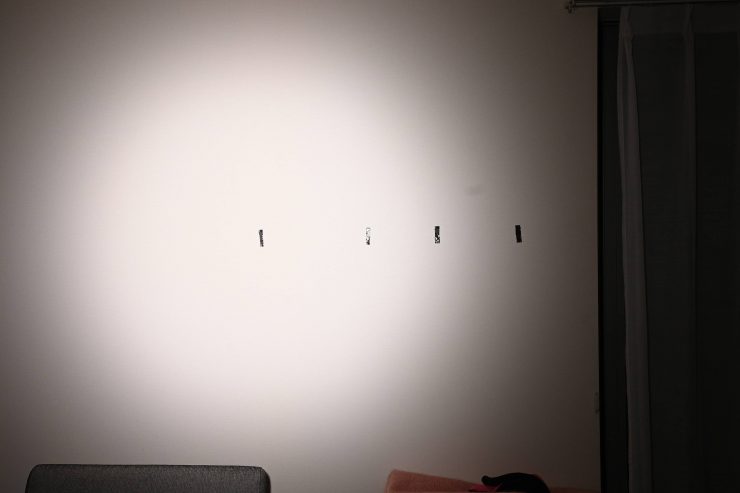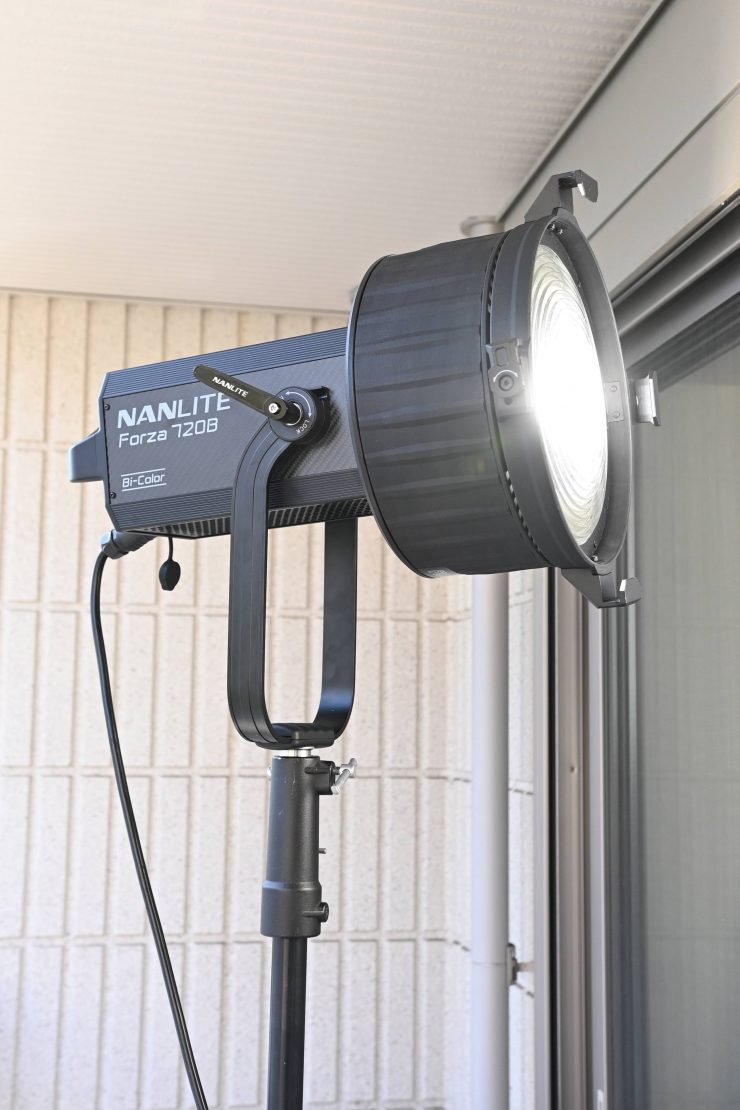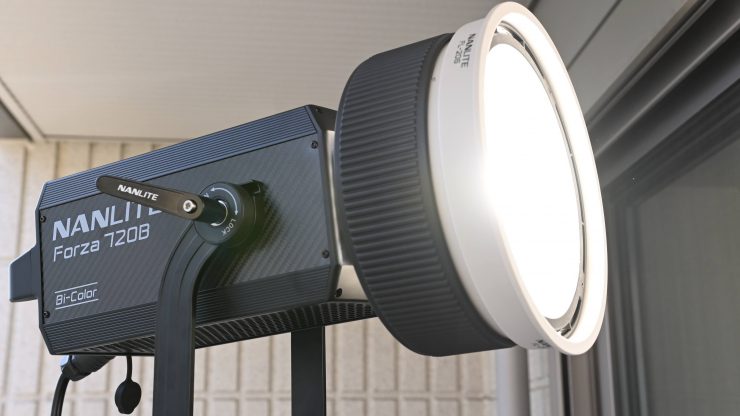
The Nanlite FL-20G Fresnel Lens is a Bowens mount Fresnel attachment that was designed for the Forza 300 and 500 series, however, it will work on the new Forza 720 and 720B as well.
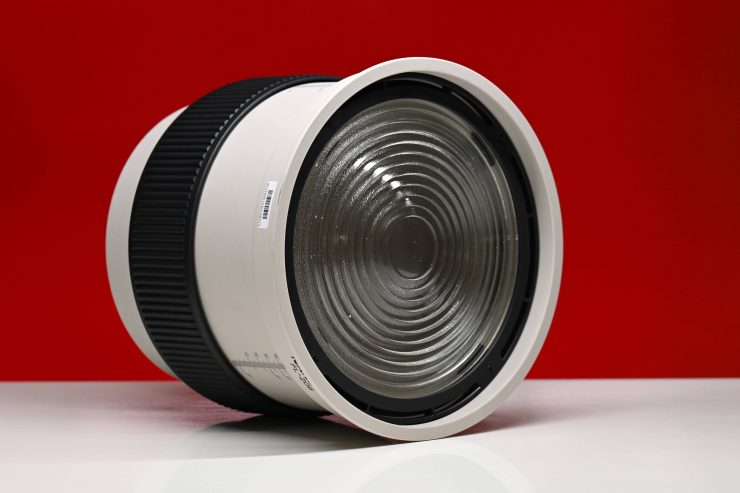
Just like the Aputure F10 Fresnel Attachment it allows you to turn the COB point source fixture into a Fresnel easily, and most importantly, without emptying your wallet.
I have reviewed the Nanlite Forza 720B on the site, and you can see that review here.
I will be comparing the Nanlite FL-20G Fresnel attachment directly against the Aputure F10 Fresnel to see what the advantages and disadvantages are when they are used on the Nanlite Forza 720/720B. Why am I doing this? Well, I found that the Aputure F10 Fresnel worked well on the Forza 720B, so I was curious to see how Nanlite’S own option compared.
Size & weight
The FL-20G Fresnel Lens isn’t as large or as heavy as the Aputure F10 Fresnel. The FL-20G weighs 2.1kg / 4.63lbs. As a comparison, the Aputure F10 Fresnel weighs 3.9kg /8.59 lbs.
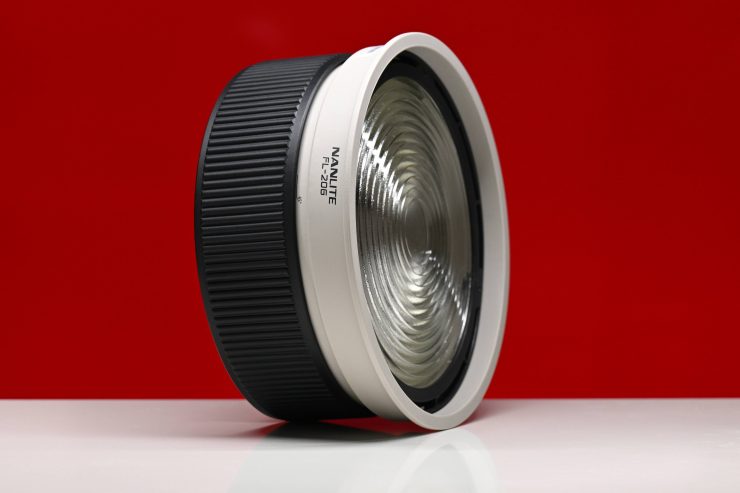
As I just mentioned, the FL-20G Fresnel Lens was built for use with the Forza 300 and Forza 500 series and it wasn’t designed with the Forza 720 or 720B in mind. I was interested to see just how well it actually works with the 720B given this is the case.
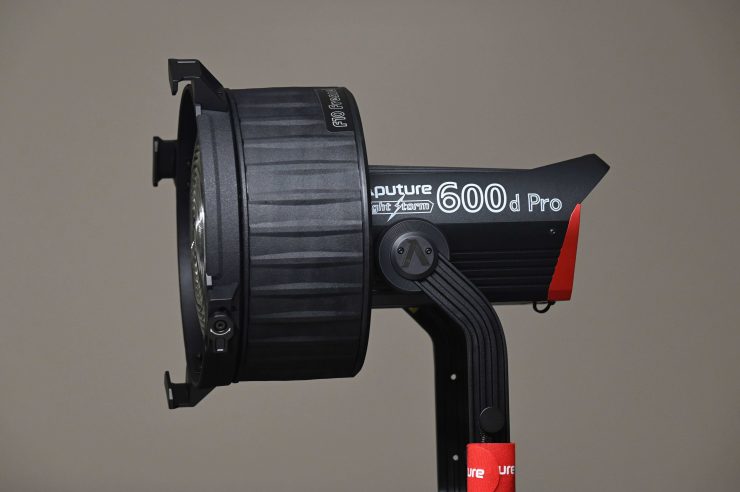
Now, there is a very legitimate reason why the Aputure F10 Fresnel is so big. When building a Fresnel for a COB LED fixture you need to match the size of that COB element to the size of the Fresnel. Often I have seen small-sized Fresnel attachments for these COB LED lights that are too small and they don’t work well. If the Fresnel attachment is too small in relation to the COB, the light getting to the Fresnel won’t be optimized. In this case, size does matter!
Fresnel lens
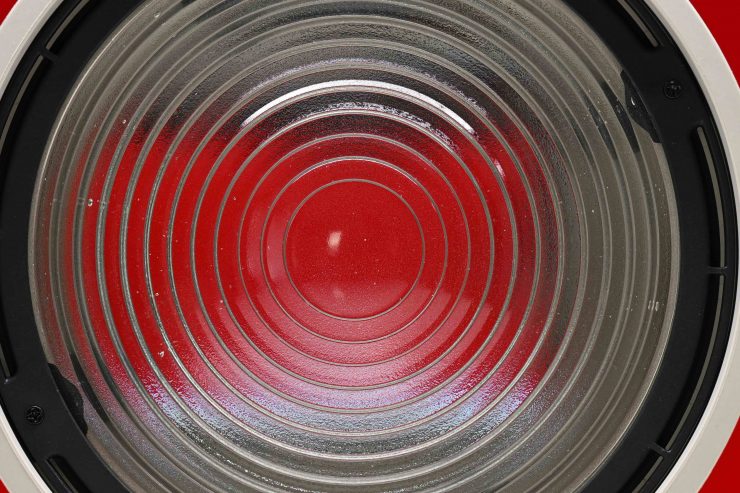
Nanlite FL-20G 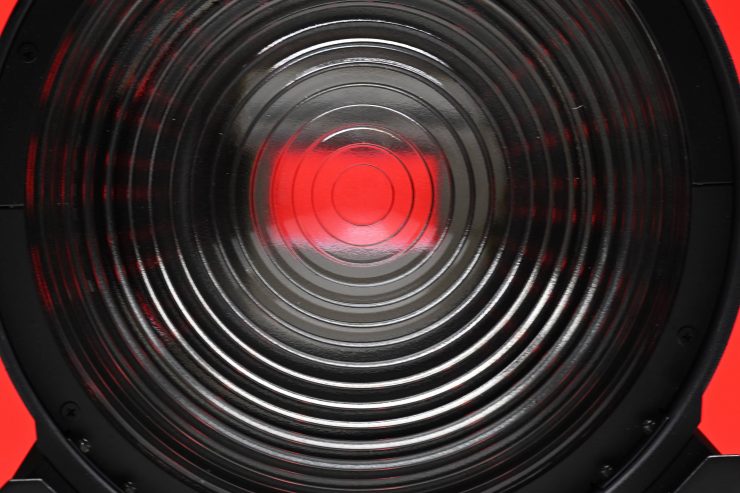
Aputure F10 Fresnel
The Nanlite FL-20G utilizes a 9.3 inches / 23.6 cm glass Fresnel, Again, as a comparison, the Aputure F10 uses a 10″ / 25.4 cm glass Fresnel. 10″ is an industry-standard size for Fresnel glass and it has the added benefit that wire kit inserts that worked on HMIs and older Fresnels will work with the F10. The only slight caveat is that it will only fit one.
Despite 10″ being an industry-standard size for Fresnel glass, a lot of companies now making Fresnel attachments for COB spot lights that are smaller.
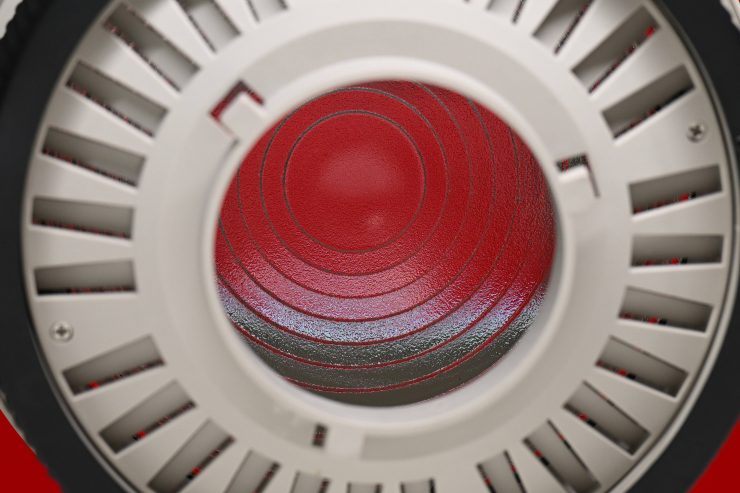
Nanlite FL-20G 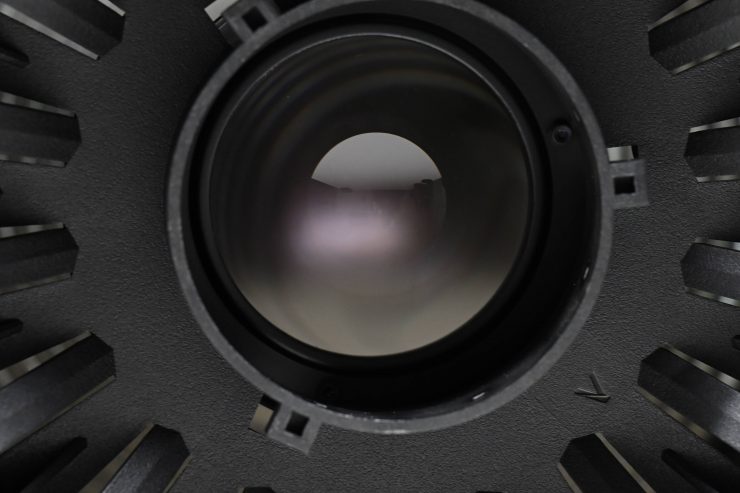
Aputure F10 Fresnel
The Nanlite FL-20G features a very traditional design, conversely, the Aputure F10 utilizes another piece of glass at the back that throws the light at the front Fresnel element. Why is this important to know? Well, that design helps to maximize the amount of output you can get out of the Aputure 600d/600x/600c Pro.
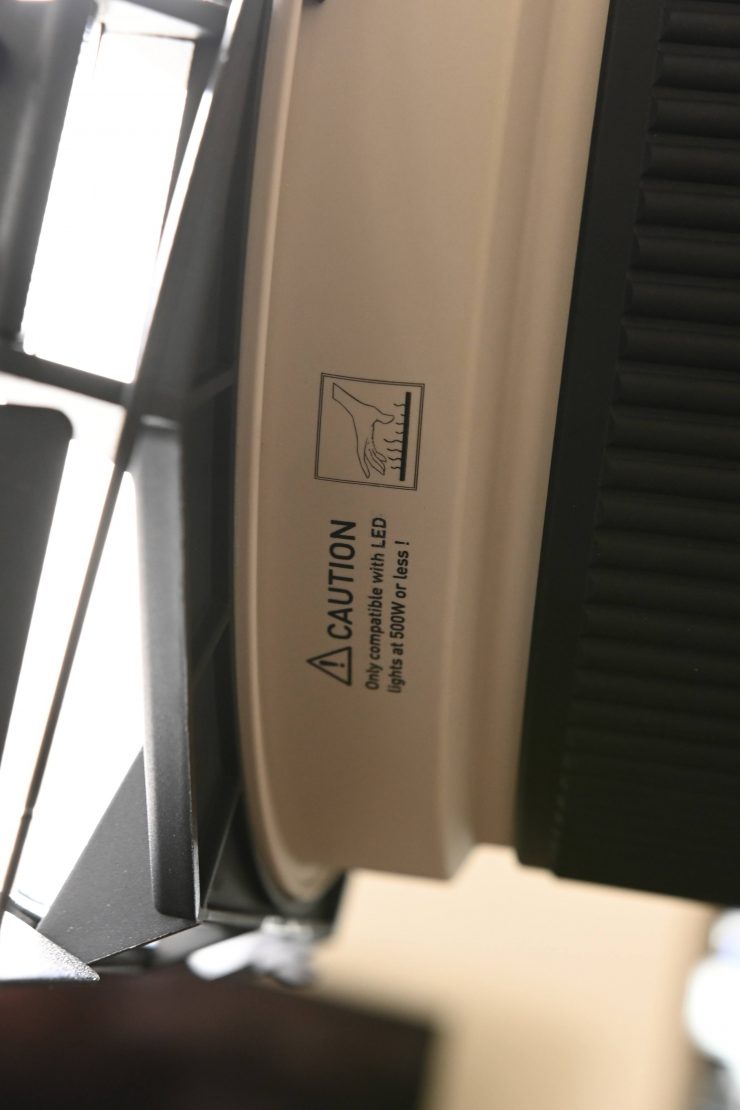
What is interesting is that even though Nanlite recommended using the FL-20G with the Forza 720/720B, the Fresnel actually has a warning label on it that states that it should only be used with LED lights that are 500W or less. I contacted Nanlite about this and they told me that they have done extensive testing and the FL-20G is perfectly safe to use with the Forza 720/720B. They also told me that they will be removing that warning label from the product.
10° to 45° Variable Beam Angle
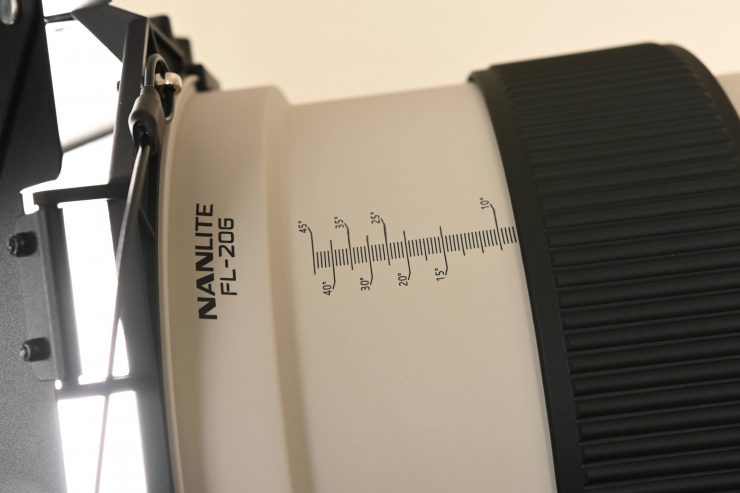
The Nanlite Nanlite FL-20G has an adjustable beam angle of 10° to 45°, whereas the Aputure F10 Fresnel allows you to adjust the beam angle from 15° to 45°. Neither Fresnel offers a massive amount of adjustment, however, it should suit most people’s needs. As a reference, most high powered HMI fixtures will flood out to around 65°.
To adjust the beam angle you simply just rotate the outer housing of the FL-20G. This is fairly easy to do.
Build Quality
The build quality of the FL-20G is pretty good. It feels solidly made and the beam angle adjustment ring is reasonably smooth. There was nothing in regards to build quality that concerned me.
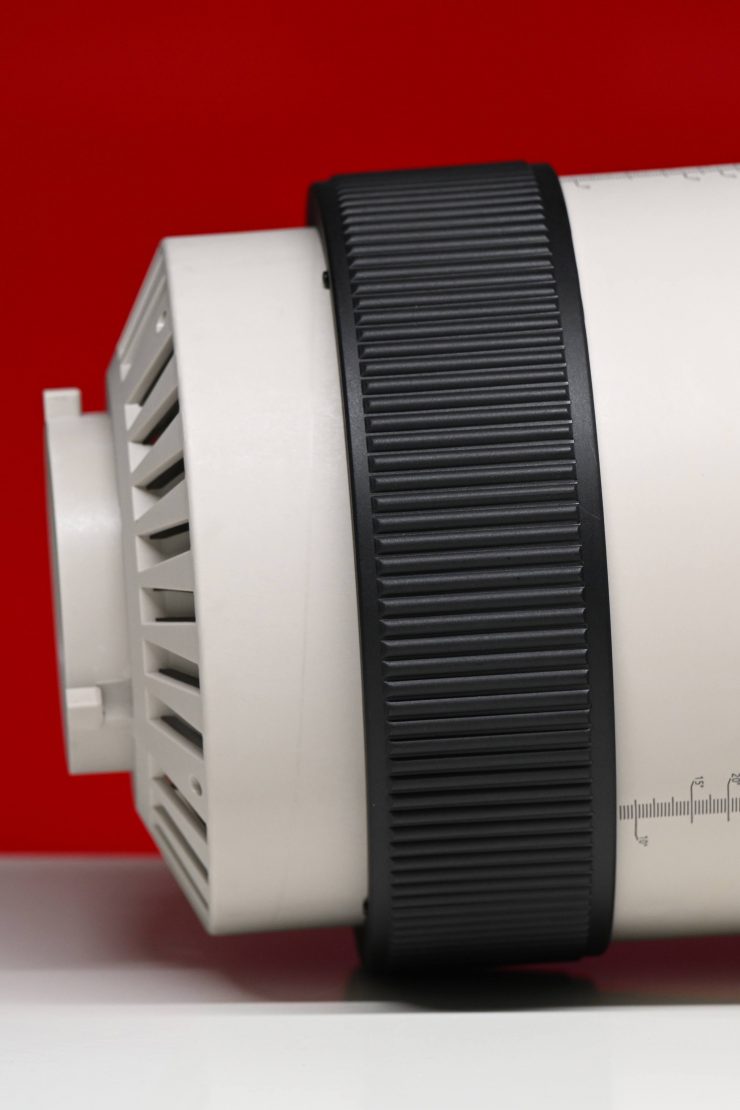
The adjustment ring for the Fresnel operation isn’t made out of metal, instead, it uses a composite type material. The nice aspect about this is that this type of material is that certainly helps to dissipate heat.
The barn doors attach with a clip mechanism. This makes them easy to put on or take off the Fresnel. Nanlite also includes a wire lanyard that you can use to attach the barn doors to a yoke frame.
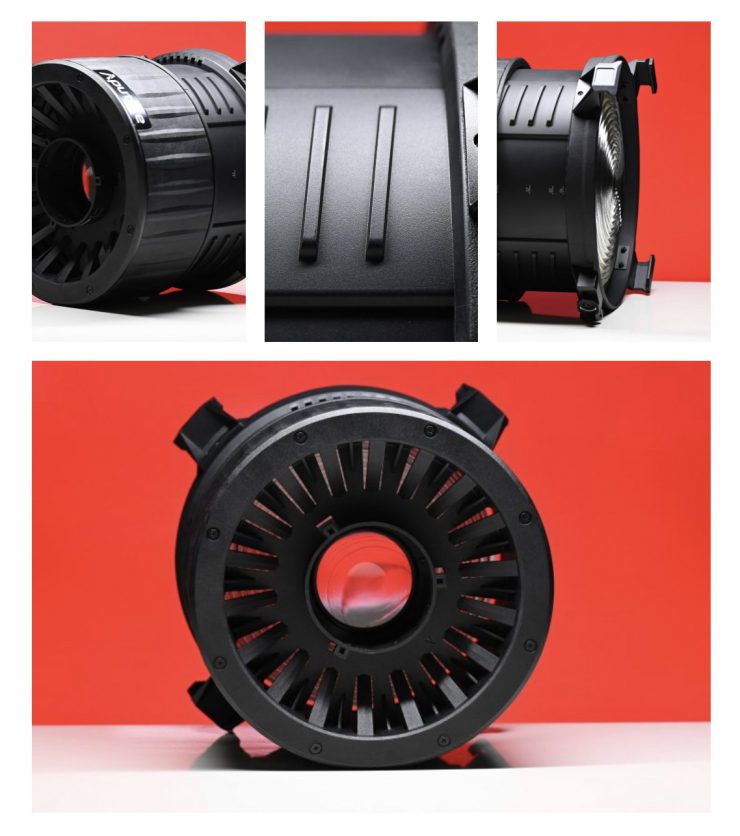
The build quality of the Aputure F10 Fresnel is also very good, considering its price.
How does it attach?
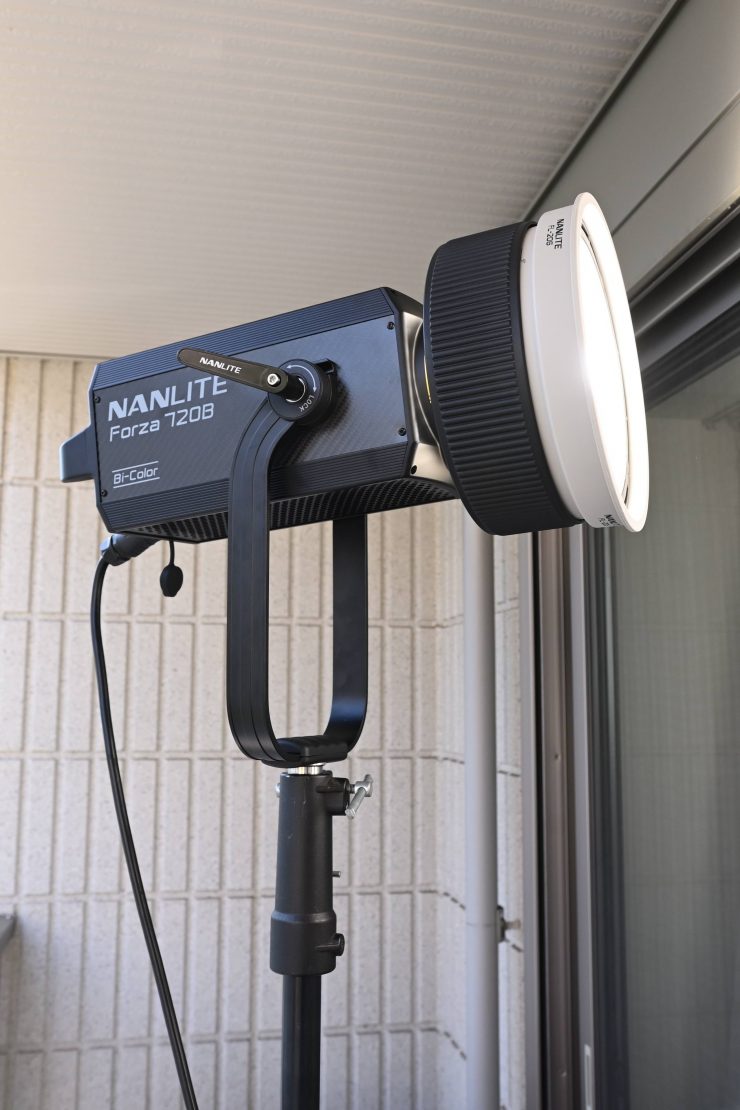
Like all of the other accessories available for the larger Forza fixtures, the FL-20G Fresnel attaches to the front of the Forza 720/720B via the Bowens mount.
Unlike the larger Aputure F10 Fresnel, it is easy to attach given its smaller size and weight.
Range of motion when using the Fresnel
You don’t want the range of motion to be compromised when using a Fresnel attachment on a fixture. The range of motion you can get with this combination is impressive.
If you do put the barndoors on, then the range when angling the light down will be a little less.
Included Case
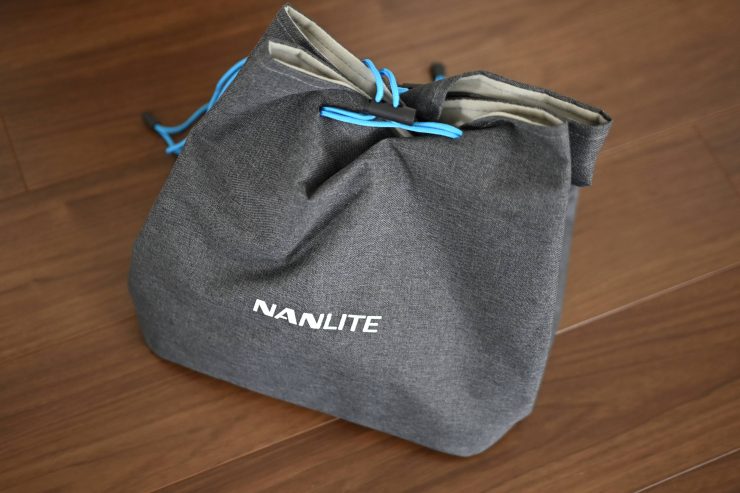
The FL-20G does come in its own carrying case, but this is just a soft drawstring type bag. This isn’t suitable for traveling, but it does that job if you are just putting it in a vehicle, etc.
If you are going to make a robust product that could be carried in rental houses you need to put it in an equally robust case. Nanlite should probably make a more robust case for the Fresnel as they do for the PJ-BM-19 Projection attachment.
Barndoors
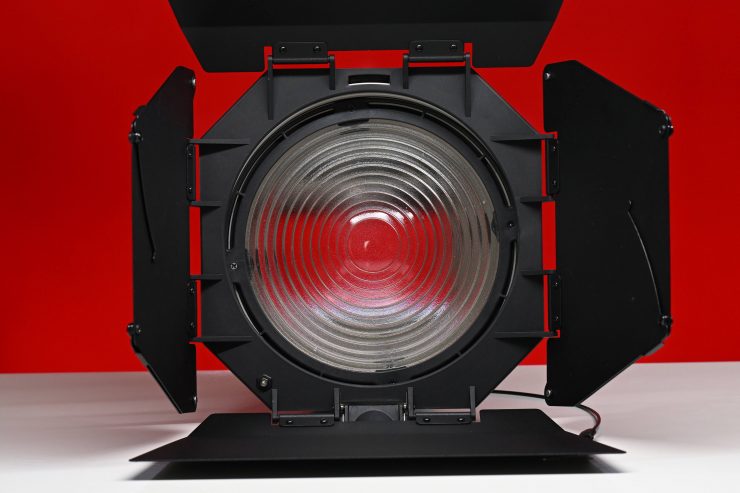
Unlike with the Aputure F10 Fresnel where you need to purchase optional 10” Metal Barndoors, the Nanlite FFL-20G comes with a set as standard.
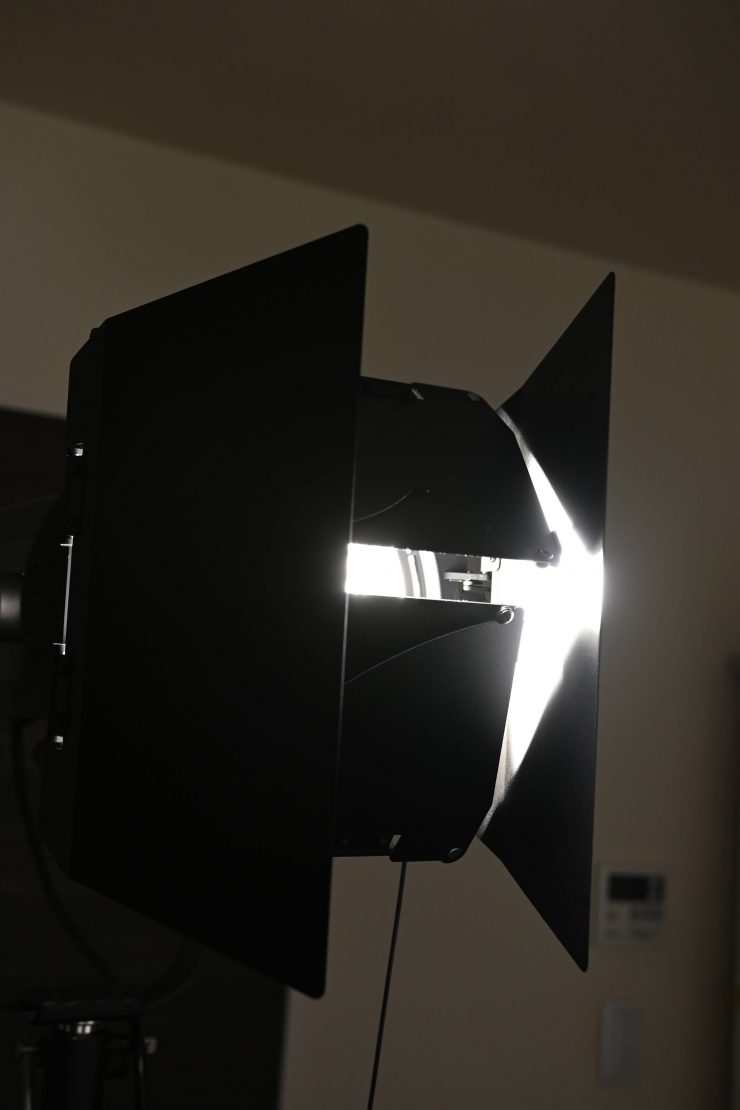
However, unlike the barndoors for the Aputure F10 that feature 8-leaf adjustability (which is important when trying to cut light from a large light source), the ones for the FL-20G feature two regular sides and two with adjustable flags. In saying that, I found that the barndoors worked really well.
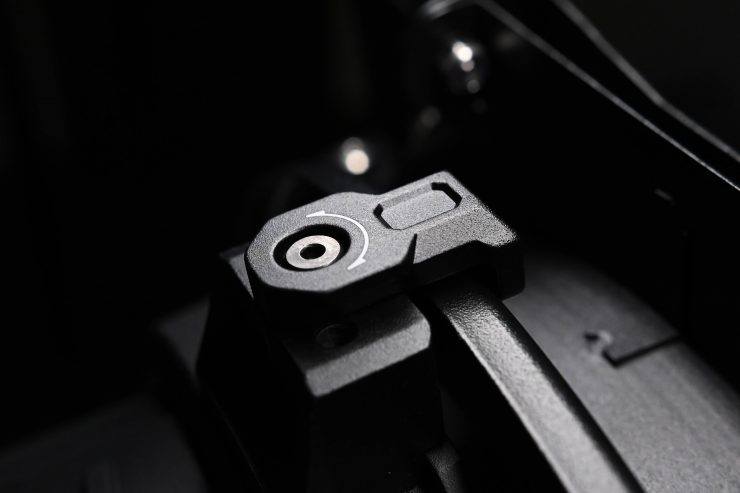
Aputure F10 Fresnel 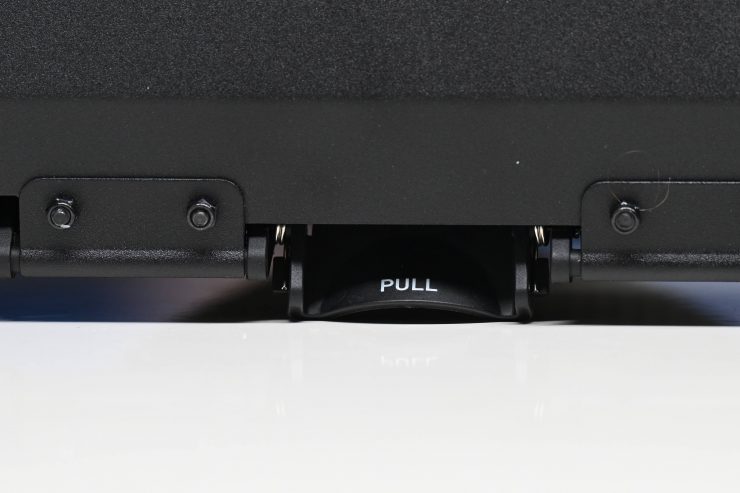
Nanlite FL-20G
The latching system is just a plastic clip for attaching the barn doors to the FFL-20G, and it isn’t as solid as the system found on the Aputure F10 barndoors. As I mentioned earlier, for added safety, there is also a lanyard that you use.
The quality and finish of the barndoors are excellent and they don’t flop around or move when they shouldn’t.
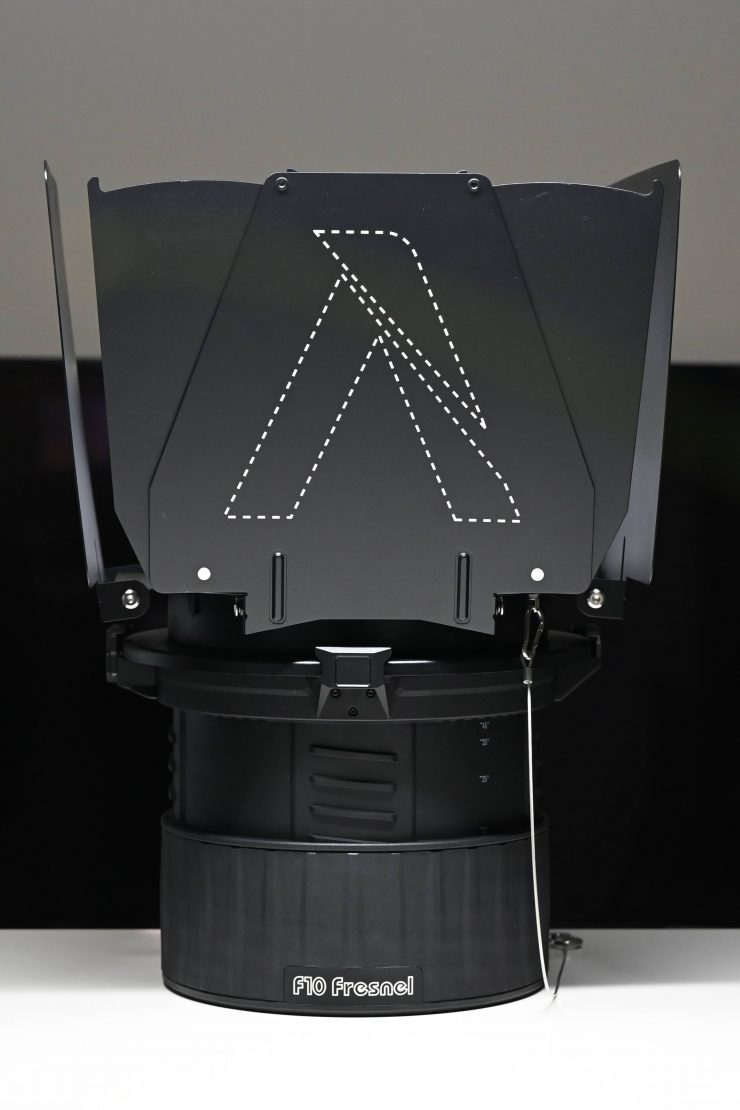
Aputure F10 Fresnel
Unlike the large and heavy barndoors for the Aputure F10 Fresnel, the barndoors for the FFL-20G are actually reasonably compact and they don’t take up too much space. The biggest issue I have with the way companies make bags for lighting equipment is they never seem to take into acount that almost everyone with be using them with accessories. There is nothing worse than having to carry around 3-4 bags for a light because no one has made a bag that takes all of the components. Yes, maybe some people will prefer smaller-sized bags to one larger one, but I personally prefer to have one bag with everything in it so I know I am not going to forget anything.
Does it cut well?
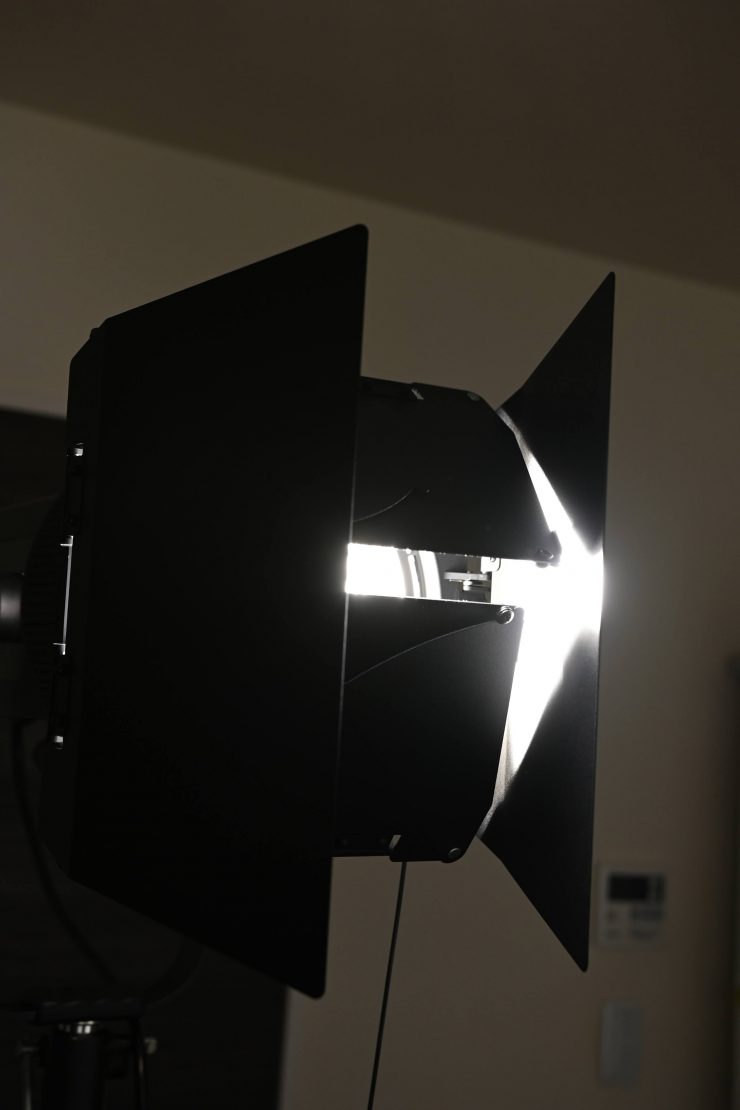
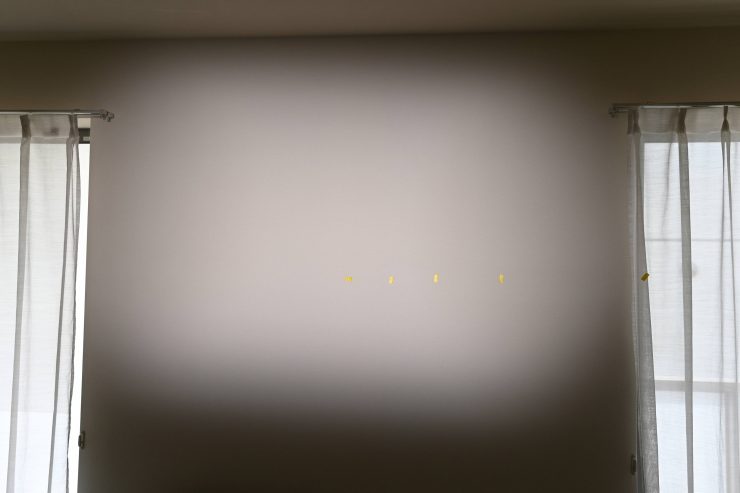
45° 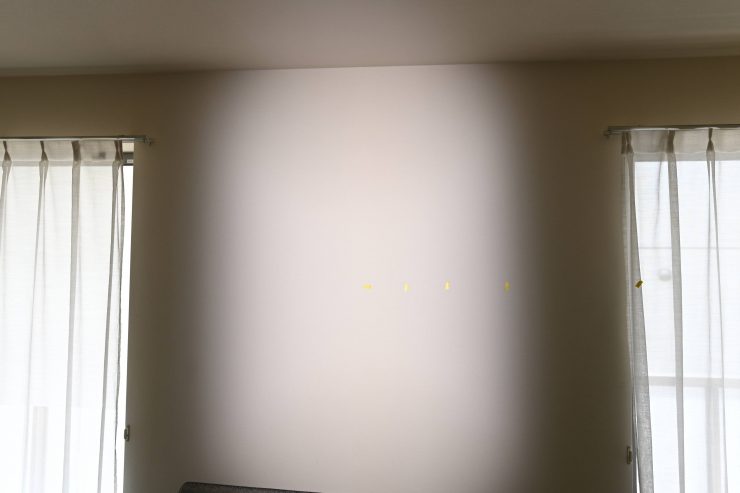
45°
With the included barndoors you can cut the light in a similar way to how you would if you were utilizing an HMI. This is a big deal because it is something a lot of other LED Fresnels struggle with. Above you can see some quick examples with the FL-20G set at 45°.
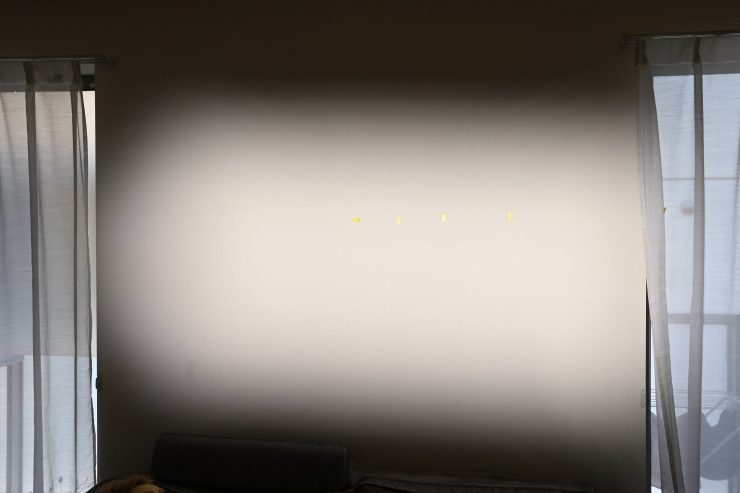
45° 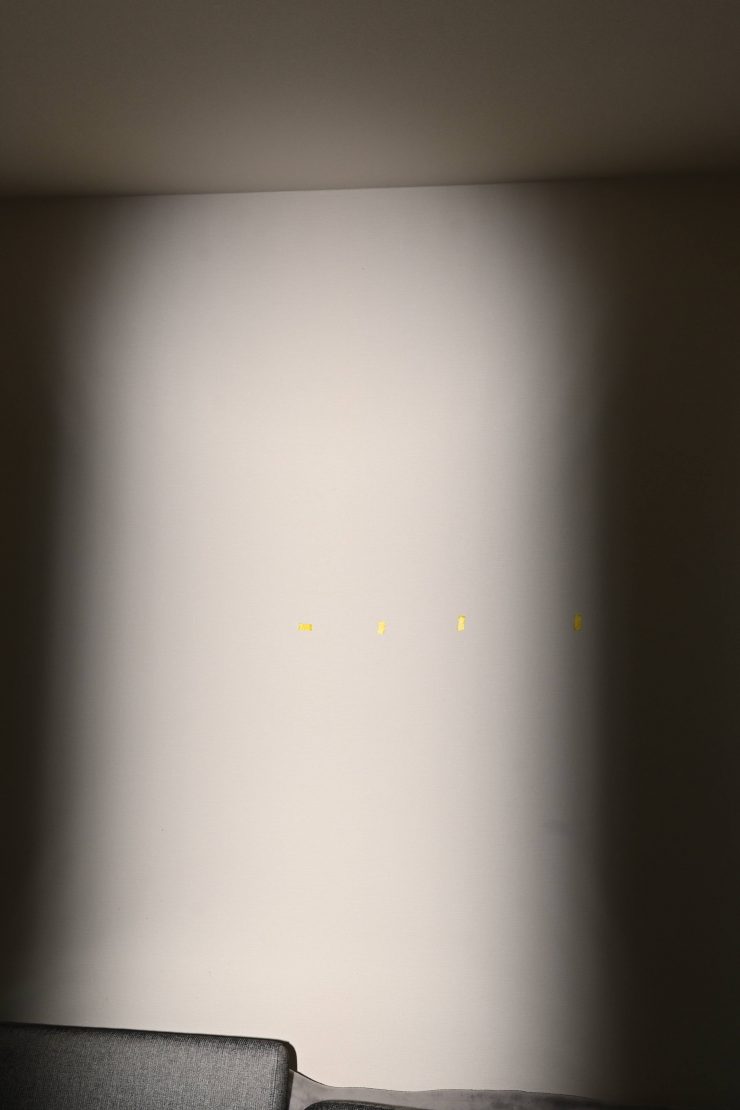
45°
As a comparison, above you can see quick examples with the Aputure F10 Fresnel set at 45°.
What you do need to be aware of, and this is the case with a lot of Fresnel attachments, is that you will get light leaking out through the back where the cooling holes are located.
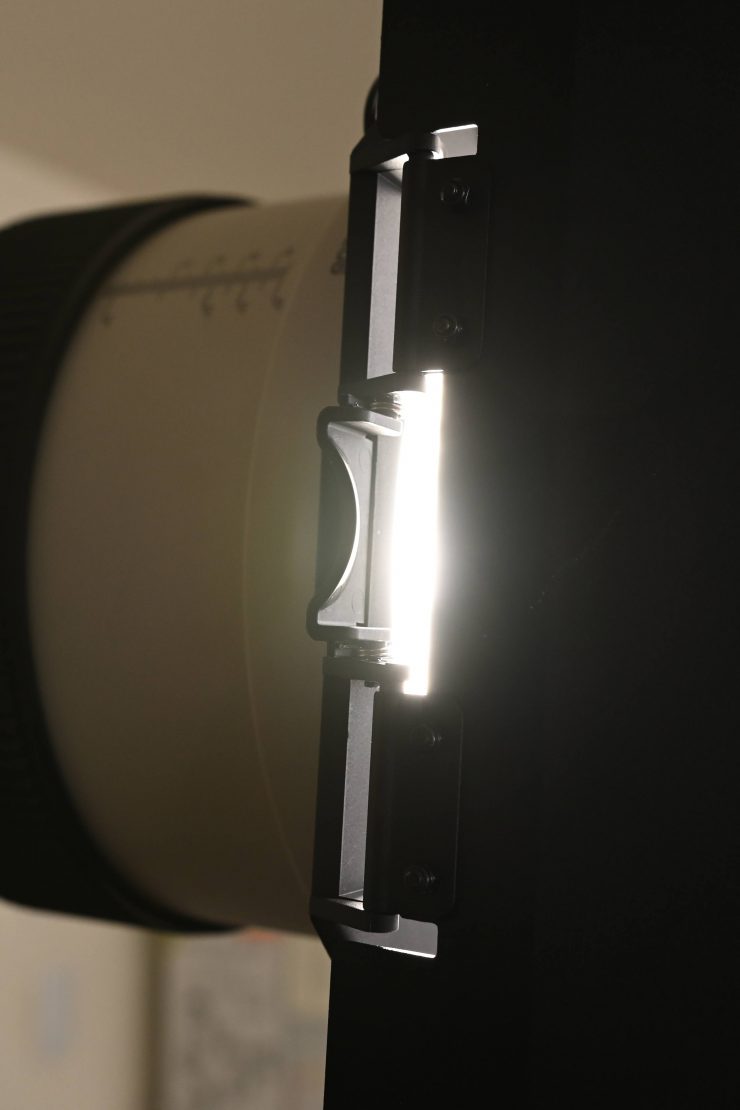
You also get light leak coming out of the front where the barn doors attach, although I didn’t find this to be a problem.
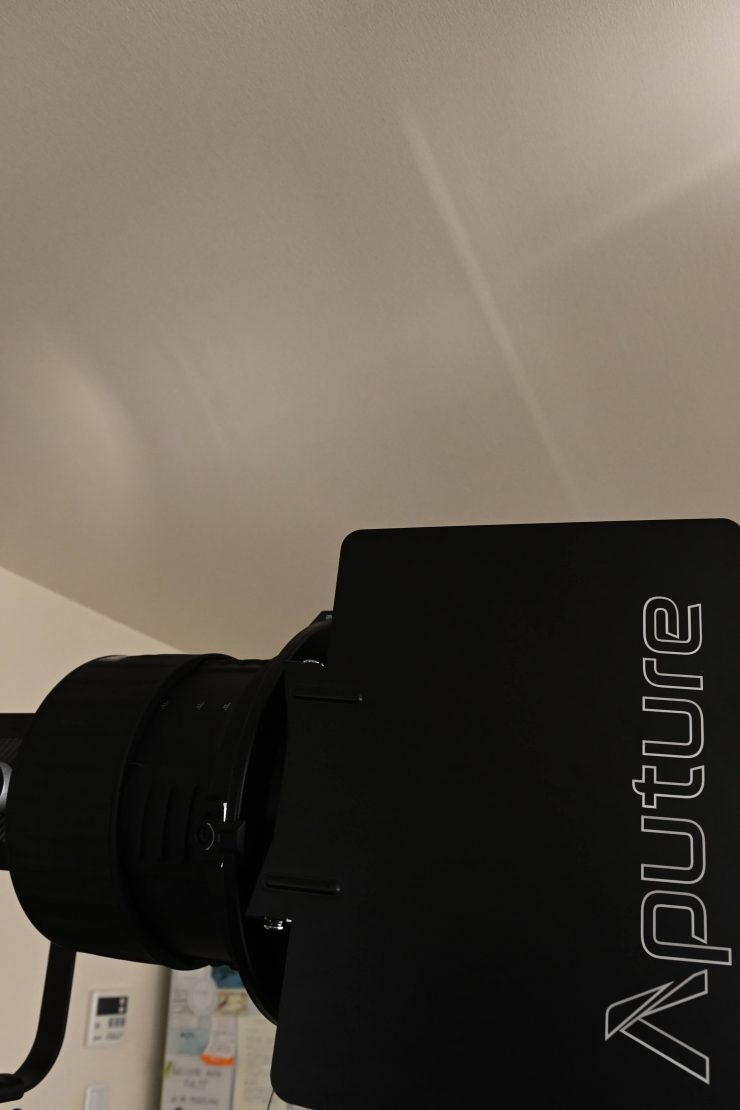
With the Aputure F10, you do also get some light leaks, but not as much as when using the FL-20G.
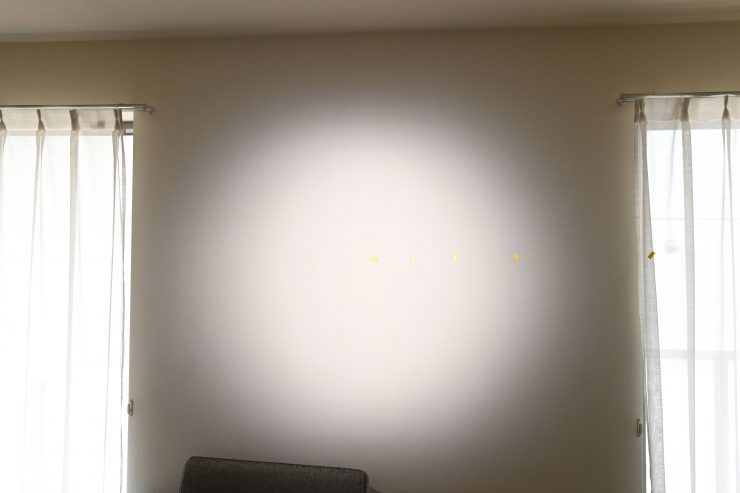
10°
If you try using the FL-20G at 10° with the barndoors you will find that you can’t get a square or straight cut anymore and instead the cut will take on more of a circular/oval appearance.
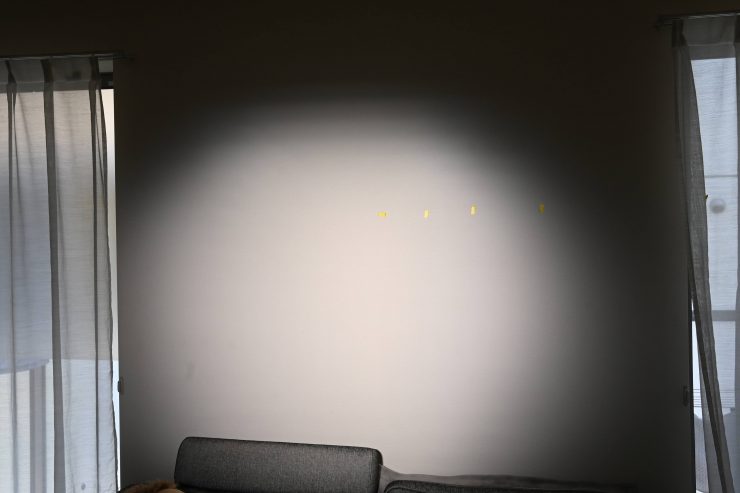
Above you can see the results you get when using the Aputure F10 at 15° with the barndoors.
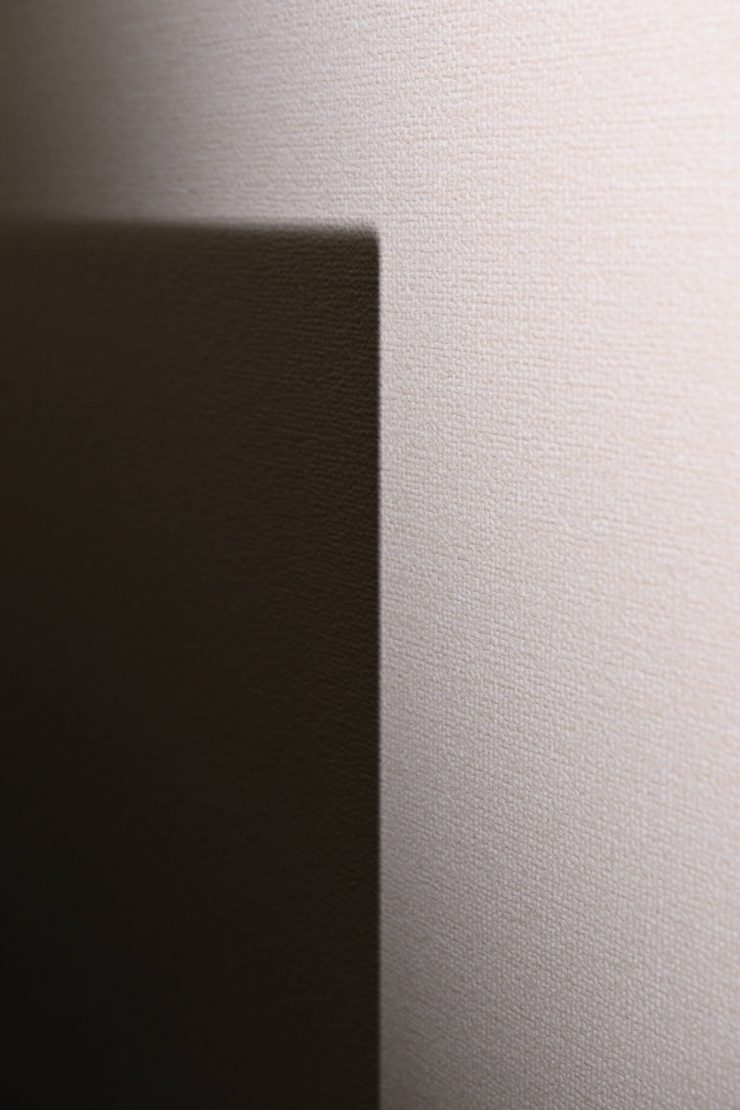
45° 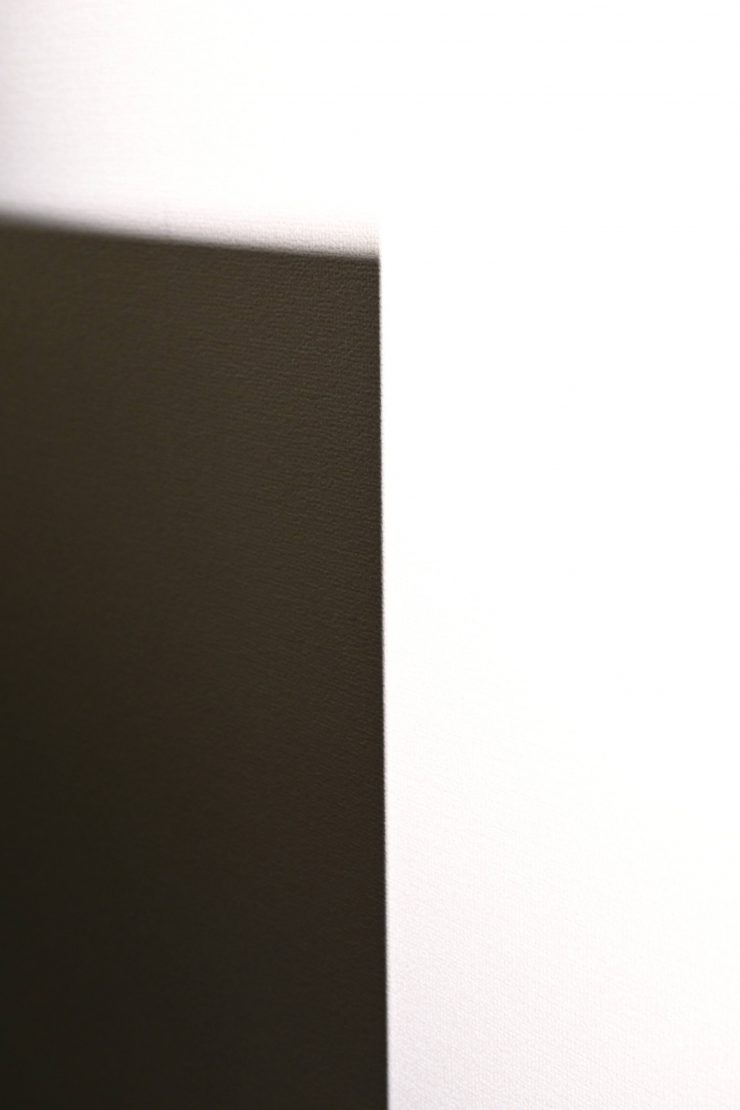
10°
The FL-20G allows you to get pretty clean-edged shadows when used at any beam angle. They are certainly sharper at 45°, but even at 10° they aren’t too bad.
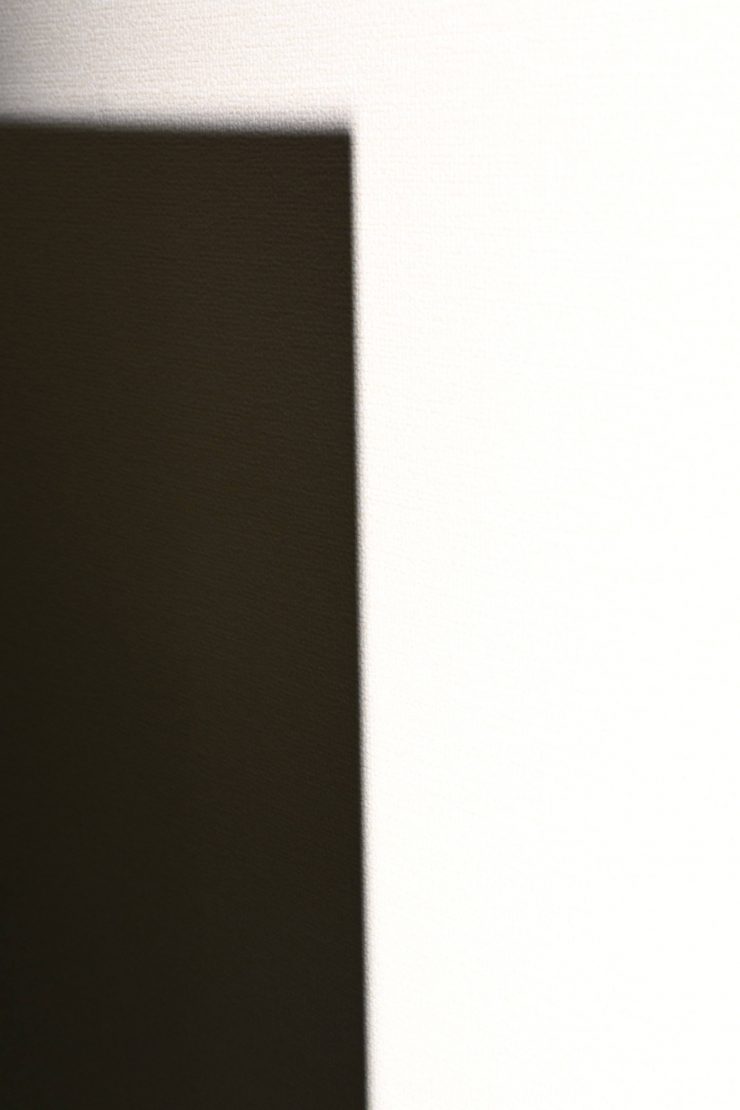
45° 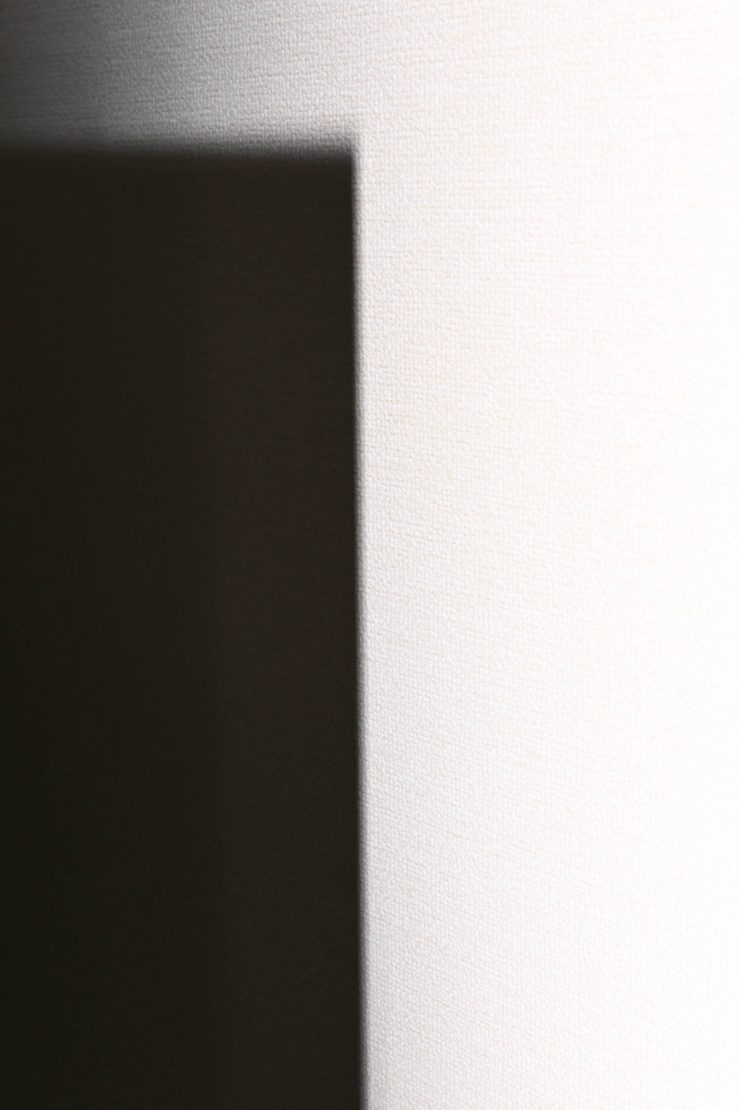
15°
Above you can see examples when using the Aputure F10 Fresnel at 45° and 15°. To my eye, the Nanlite FL-20G is able to produce slightly sharper edges, but there is not a huge difference.
Output & Color Temperature Accuracy
A big factor for a lot of people when buying a light is how much output it can produce. I tested the Nanlite Forza 720B with the FL-20G Fresnel to see how much output using it using a Sekonic C-800 at a distance of 1m (3.28ft) in a controlled environment
All measurements were taken from the front of the attachment being used. All measurements were taken with the Sekonic C-800 at the exact same height and offset to where the middle of the light source was.
I have also included figures for using the Nanlite Forza 720B with the Aputure F10 Fresnel, so you can see what the differences are.
Below you can see the results:
FL-20G Fresnel Attachment 45°
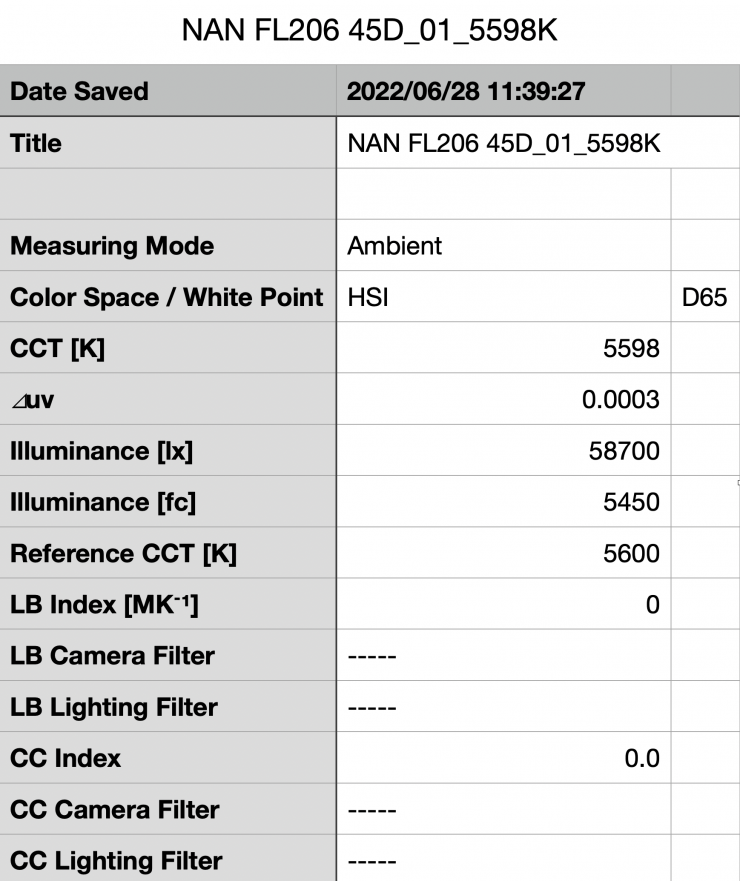
When used with the FL-20G Fresnel Attachment the Nanlite Forza 720B had an output of 58,700 lx (5450 fc).
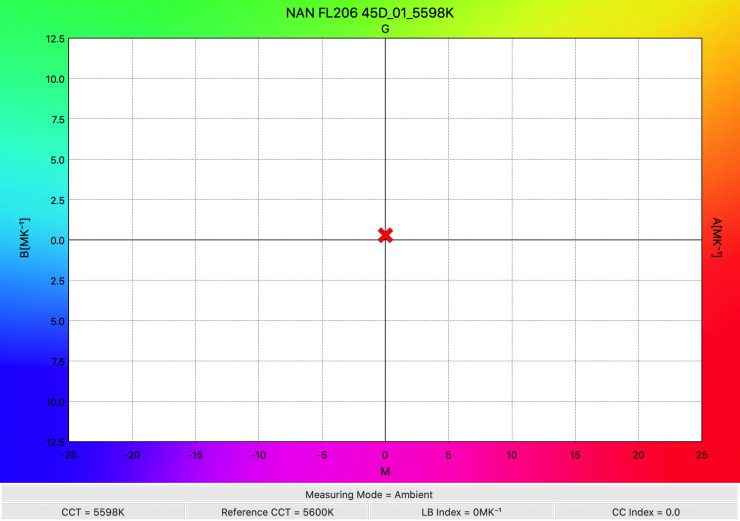
Used with the FL-20G Fresnel Attachment the light produced a Kelvin color temperature of 5589K, which was almost a perfect result.
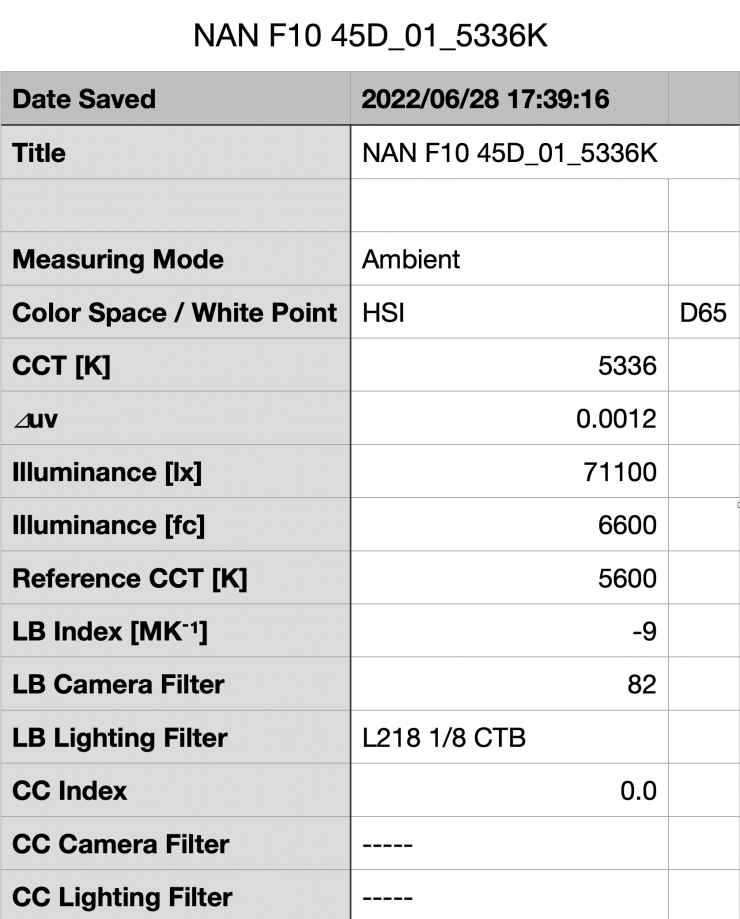
As a comparison, above is how much output the Nanlite 720B, when set at 5600K and used with the Aputure F10 Fresnel set at 45°, produced 71,100 lx (6600 fc) at a distance of 1m. This was 21.12% more output than when it was used with Nanlite’s own FL-20G Fresnel Attachment.
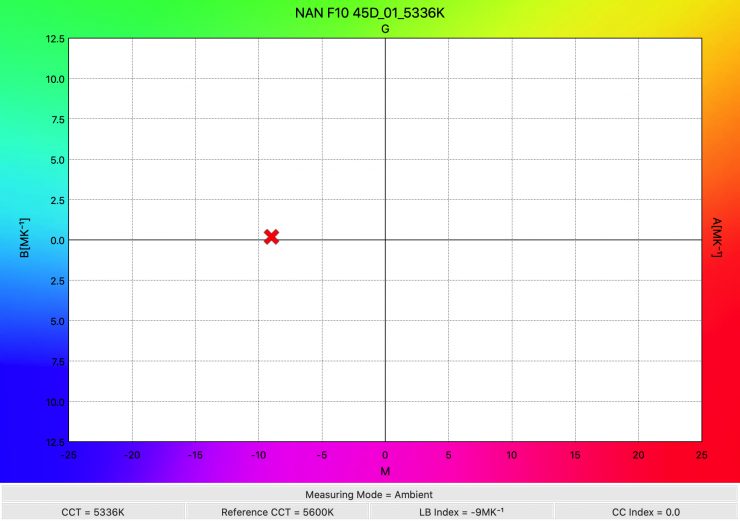
Used with the Aputure F10 Fresnel Attachment at 45° the light produced a Kelvin color temperature of 5336K. Here lies the problem with using a Fresnel from another manufacturer, while it had more output, it does affect the Kelvin color temperature quite a lot. When used with Nanlite’s own FL-20G Fresnel Attachment the Forza 720B recorded a reading of 5589K.
FL-20G Fresnel Attachment 30°
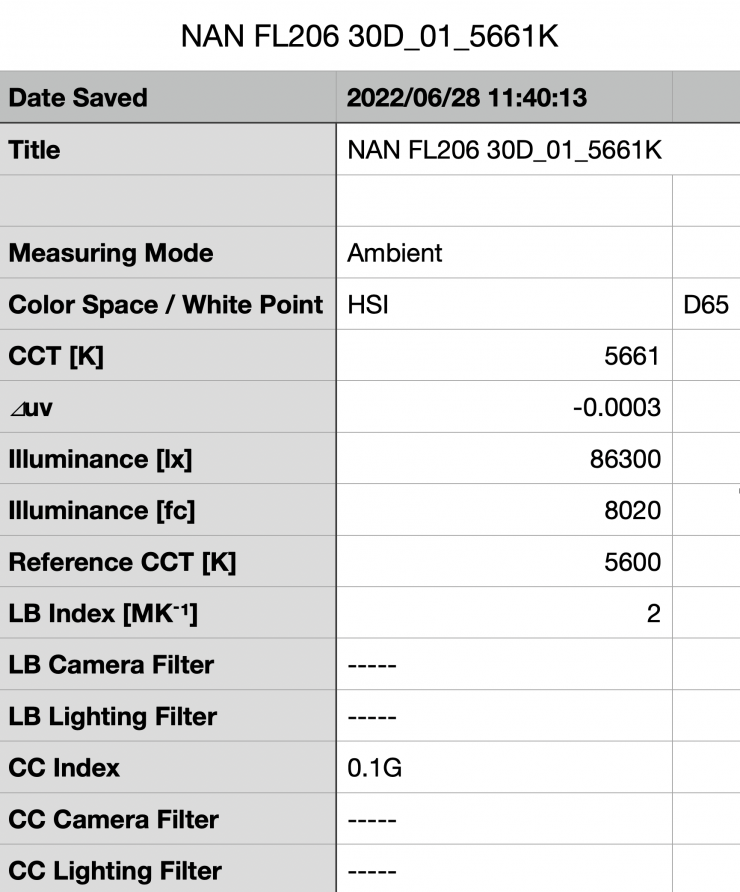
When used with the FL-20G Fresnel Attachment the light had an output of 86,300 lx (9340 fc) when set at 30°.
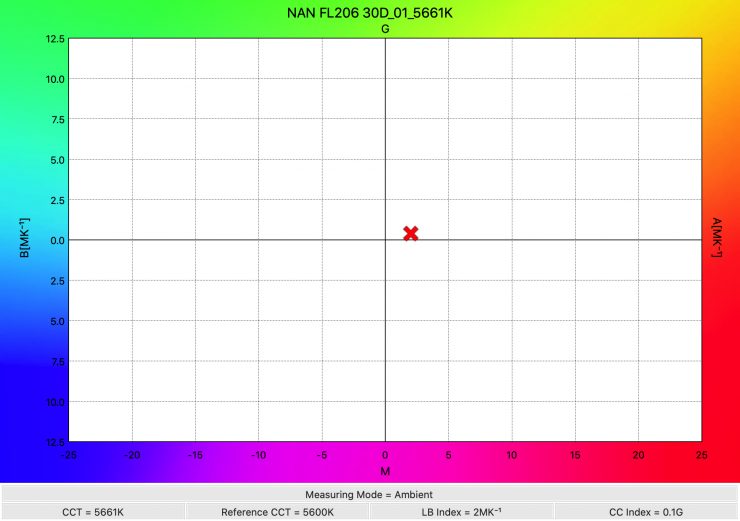
Used with the FL-20G Fresnel Attachment at 30° the light produced a Kelvin color temperature of 5661K, which was a little higher than when used at 45°.
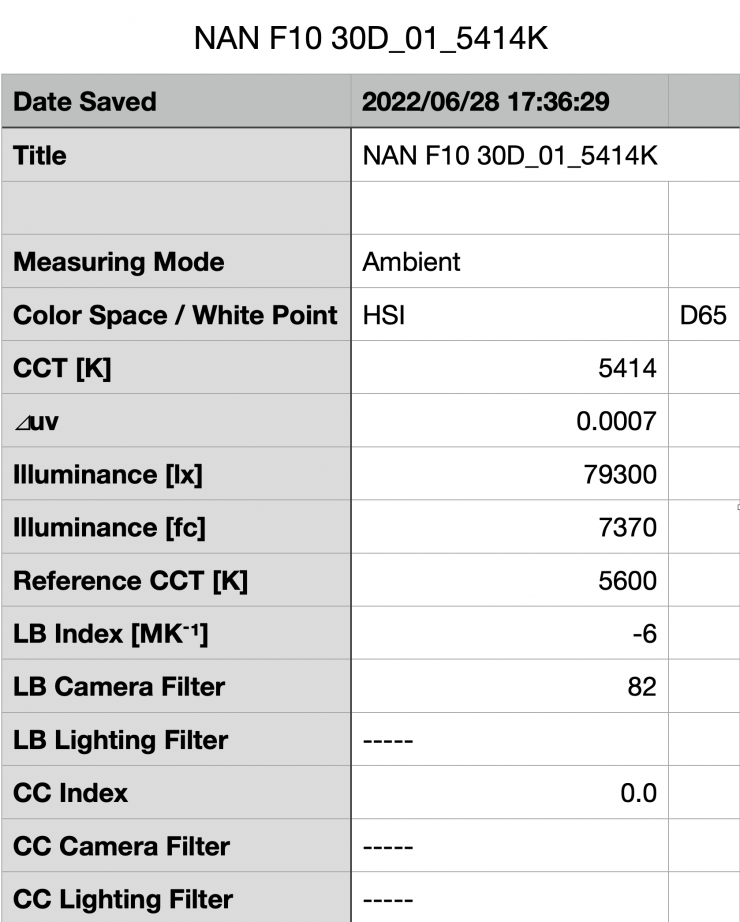
As a comparison, above is how much output the Nanlite 720B, when set at 5600K and used with the Aputure F10 Fresnel set at 30°, produced 79,300 lx (7370 fc) at a distance of 1m.
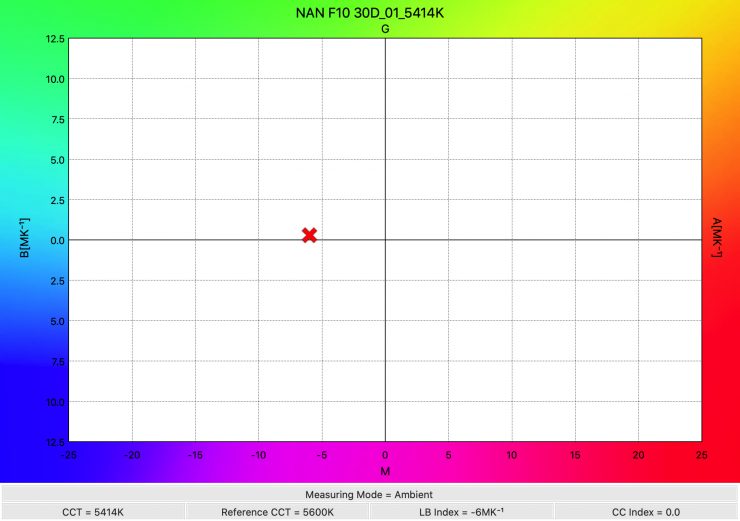
Used with the Aputure F10 Fresnel Attachment at 30° the light produced a Kelvin color temperature of 5414K.
FL-20G Fresnel Attachment 21°
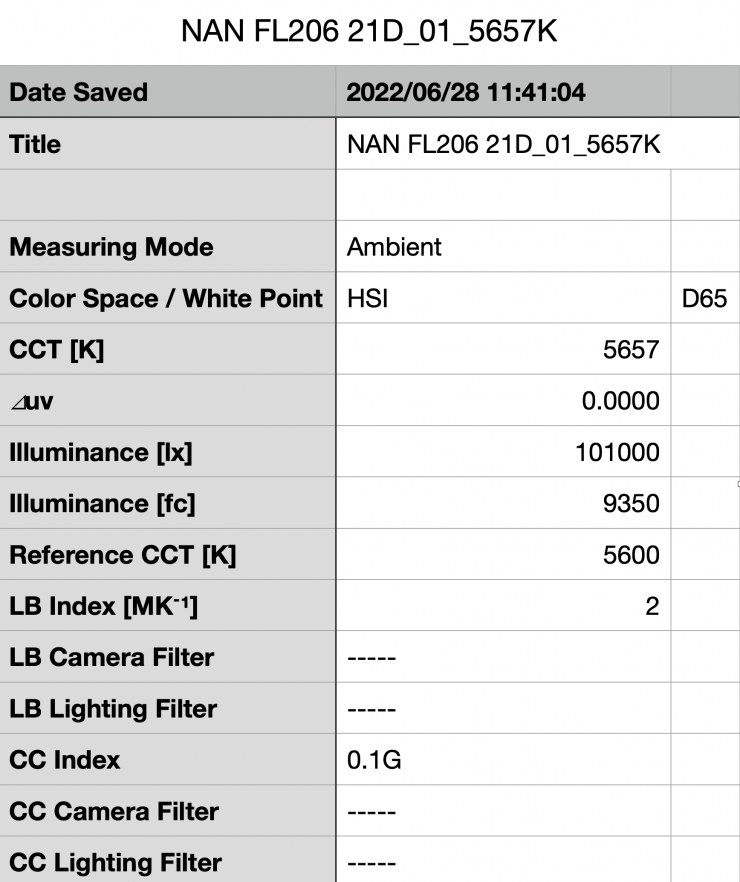
When used with the FL-20G Fresnel Attachment the light had an output of 101,000 lx (9350 fc) when set at 21°.
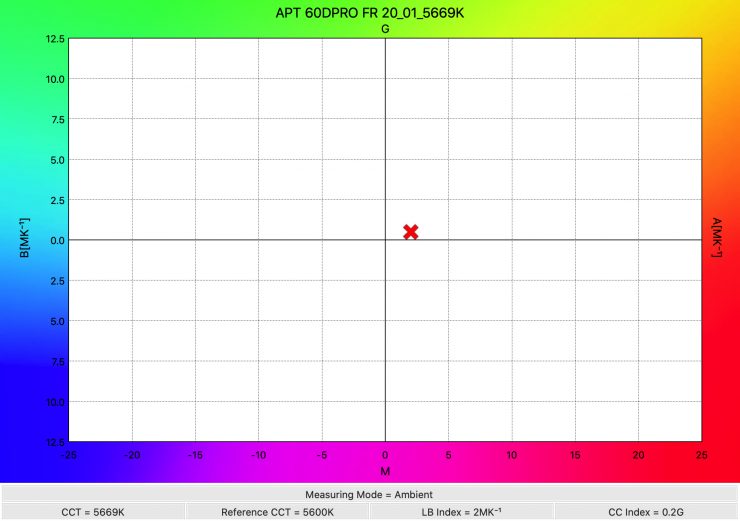
Used with the FL-20G Fresnel Attachment at 21° the light produced a Kelvin color temperature of 56657K, which was basically identical to when it was used at 30°.
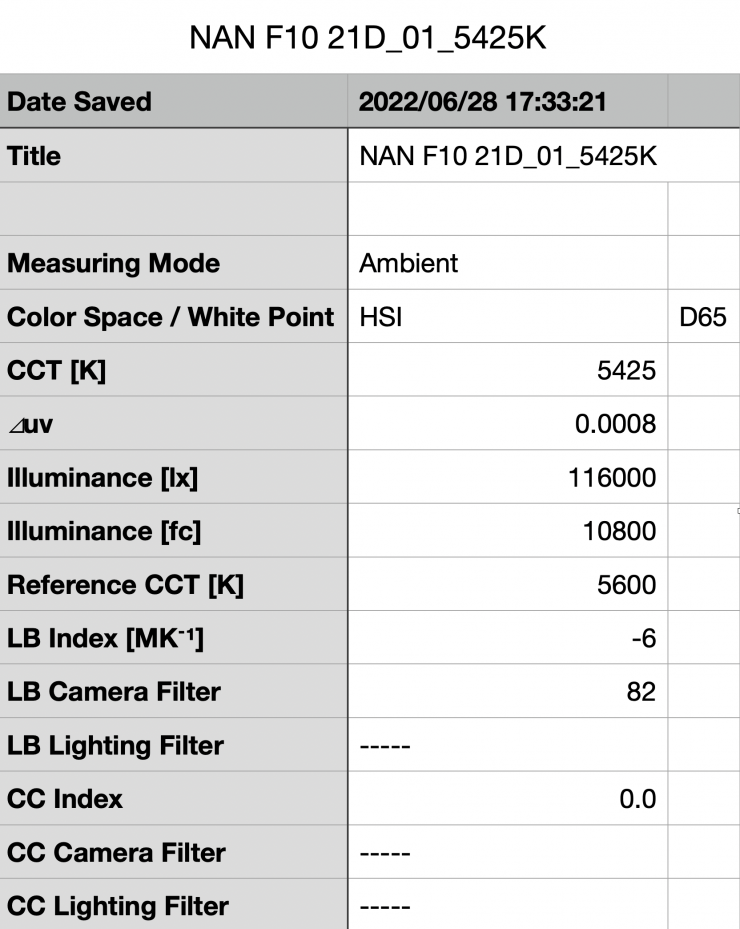
As a comparison, above is how much output the Nanlite 720B, when set at 5600K and used with the Aputure F10 Fresnel set at 21°, produced 116,000 lx (10,800 fc) at a distance of 1m.
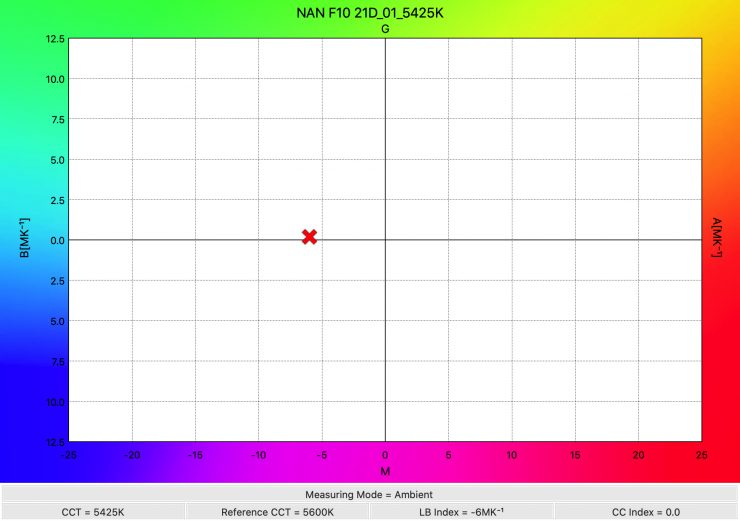
Used with the Aputure F10 Fresnel Attachment at 21° the light produced a Kelvin color temperature of 5425K.
FL-20G Fresnel Attachment 15°
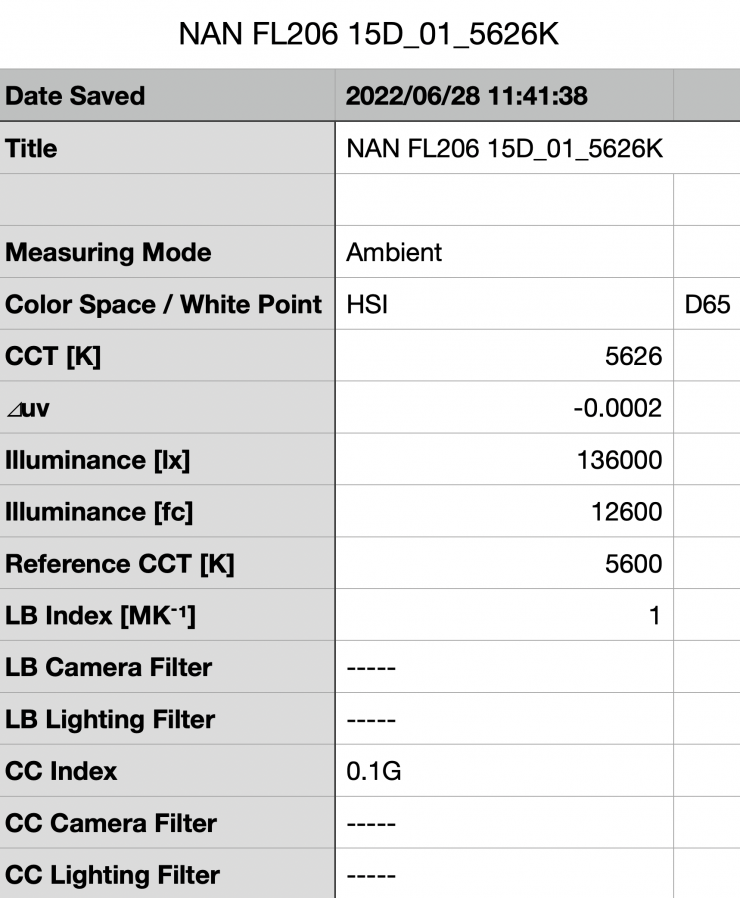
When used with the FL-20G Fresnel Attachment the light had an output of 136,000 lx (12,600 fc) when set at 15°.
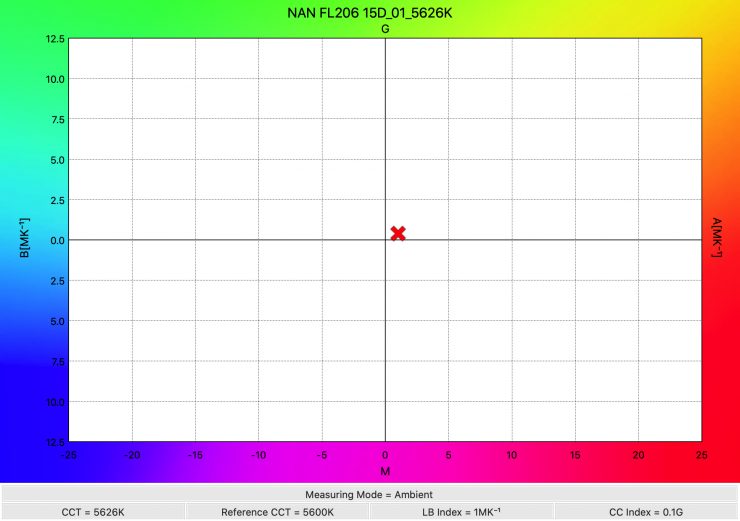
Used with the FL-20G Fresnel Attachment at 15° the light produced a Kelvin color temperature of 5626K, which was marginally better than when it was used at 21 & 30°.
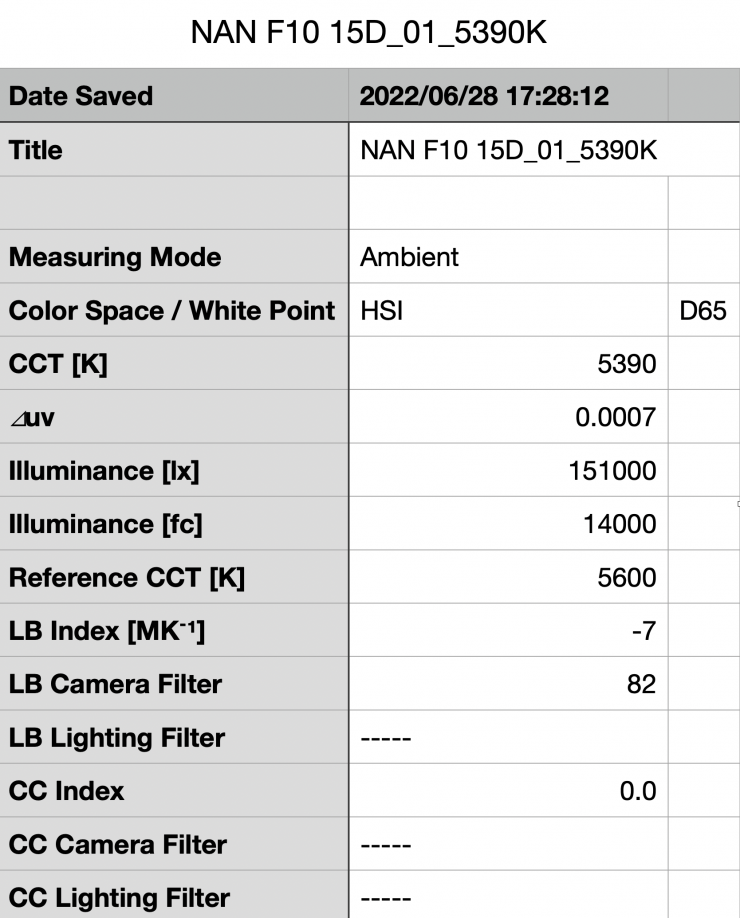
As a comparison, above is how much output the Nanlite 720B, when set at 5600K and used with the Aputure F10 Fresnel set at 15°, produced 151,000 lx (14,000 fc) at a distance of 1m.

Used with the Aputure F10 Fresnel Attachment at 15° the light produced a Kelvin color temperature of 5390K, which was a lot worse than the 5626K it recorded when used with Nanlite’s own FL-20G Fresnel Attachment.
FL-20G Fresnel Attachment 10°
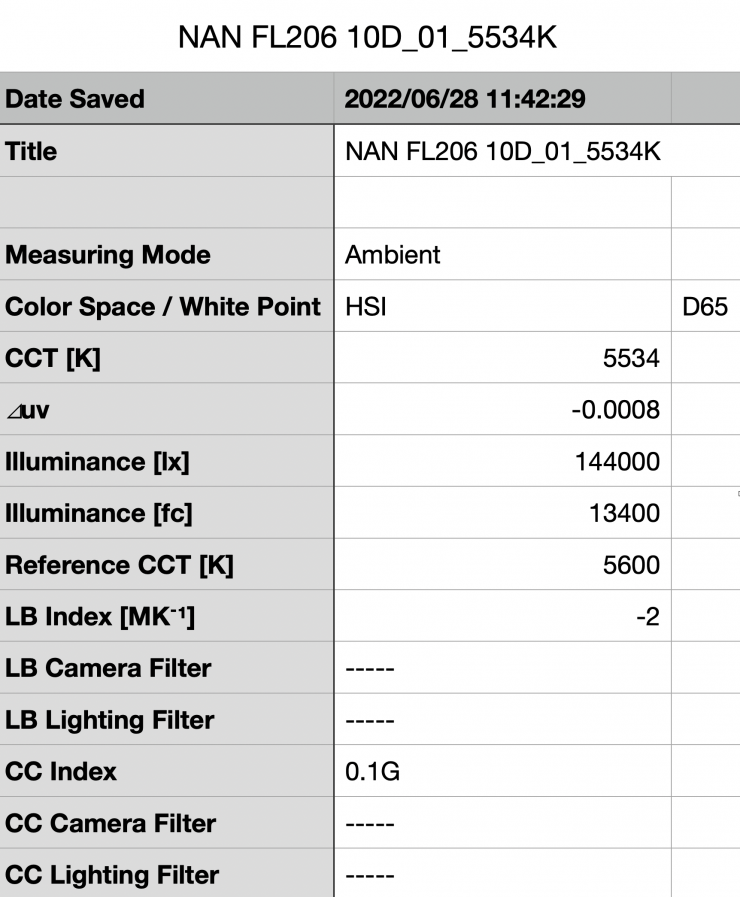
When used with the FL-20G Fresnel Attachment the light had an output of 144,000 lx (13,400 fc) when set at 10°.
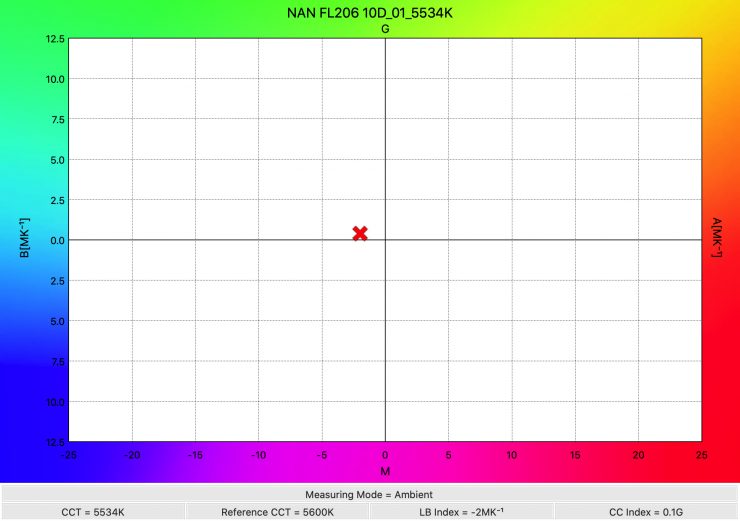
Used with the FL-20G Fresnel Attachment at 10° the light produced a Kelvin color temperature of 5534K.
Summary of results
| BEAM ANGLE | OUTPUT | KELVIN COLOR TEMPERATURE |
| 45° | 58,700 lx | 5598K |
| 30° | 86,300 lx | 5661K |
| 21° | 101,000 lx | 5657K |
| 15° | 136,000 lx | 5626K |
| 10° | 144,000 lx | 5534K |
Above you can see a summary of results for the Nanlite Forza 720B when used with the Nanlite FL-20G Fresnel Attachment at various beam angles.
| BEAM ANGLE | OUTPUT | KELVIN COLOR TEMPERATURE |
| 45° | 71,100 lx | 5336K |
| 30° | 79,300 lx | 5414K |
| 21° | 116,000 lx | 5425K |
| 15° | 151,000 lx | 5390K |
Above you can see a summary of results for the Nanlite Forza 720B when used with the Aputure F10 Fresnel at various beam angles.
As you can see from my testing, at least when it comes to output and Kelvin color temperature accuracy, Nanlite’s own FL-20G Fresnel Attachment is arguably the better option, as it doesn’t lag too far behind with output, it is more Kelvin color temperature accurate, and it is considerably smaller and lighter. Again. don’t jump to any conclusions yet, because this is just one series of tests.
How is the fall off?
I took a series of measurements at distances away from the center of the beam when using the FL-20G Fresnel Attachment at 10°, 15°, and 45° to see how linear the fall off was and if there were any hotspots. I also did the same test using the Aputure F10 Fresnel at 15° and 45°.
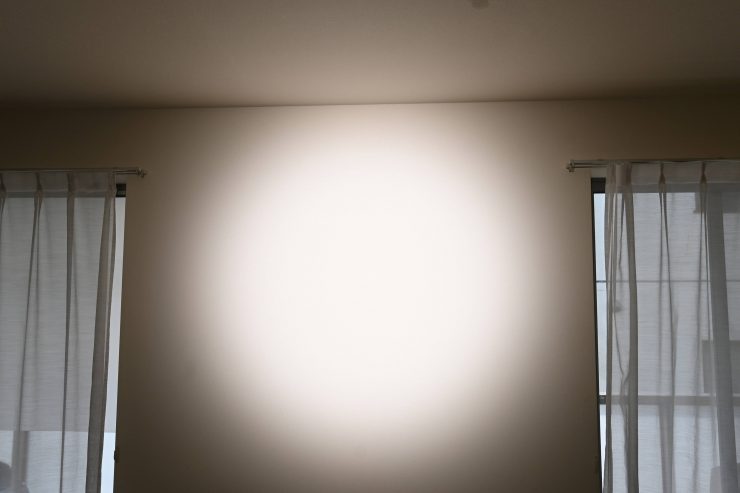
Nanlite Forza 720B & FL-20G Fresnel Attachment 45° 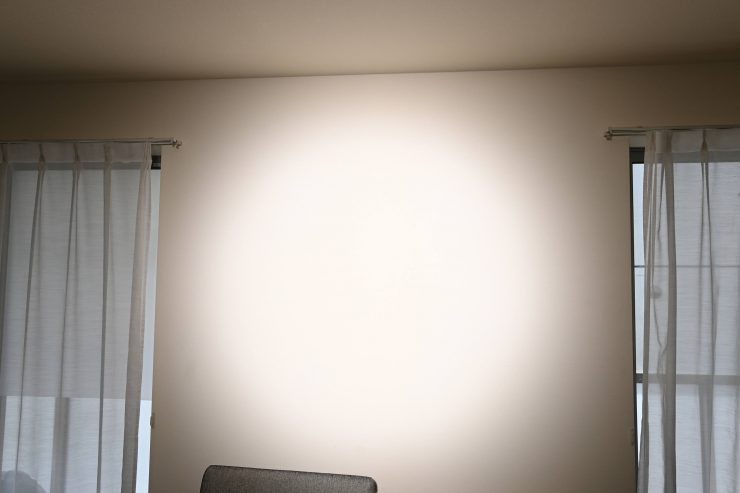
Nanlite Forza 720B & Aputure F10 Fresnel 45°
The FL-20G Fresnel Attachment does have a stronger fall-off when used at 15° compared to the Aputure F10 Fresnel.
15°
| DISTANCE FROM CENTER | LUX |
| Dead Center | 16,600 lx |
| 15cm from center | 16,400 lx |
| 30cm from center | 15,400 lx |
| 50cm from center | 10,500 lx |
| 1m from center | 1,230 lx |
Above you can see lux readings taken at the corresponding distances from the center of the beam at a distance of 3m when the light was used at 15°. You can see that the hotspot in the middle is 7.79% brighter than if you take a reading 30cm to the left or right.
The intensity of the light then starts to drop away quite dramatically from 30cm to 50cm away from the center of the beam. At 50cm away from center the output was reduced by 36.74%. At 1m from the center, the light has 92.52% less output.
| DISTANCE FROM CENTER | LUX |
| Dead Center | 20,000 lx |
| 15cm from center | 19,700 lx |
| 30cm from center | 18,900 lx |
| 50cm from center | 13,800 lx |
| 1m from center | 1,950 lx |
As a comparison, above you can see lux readings taken at the corresponding distances from the center of the beam at a distance of 3m when the light was used with the Aputure F10 Fresnel set at 15°. You can see that the hotspot in the middle is 5.5% brighter than if you take a reading 30cm to the left or right.
The intensity of the light then starts to drop away quite dramatically from 30cm to 50cm away from the center of the beam. At 50cm away from center the output was reduced by 31%. At 1m from the center, the light has 90.25% less output.
When using the Nanlite Forza 720B and the FFL-20G Fresnel Attachment or Aputure F10 Fresnel at 15°, you get fairly similar results in terms of light fall off. The hot spot is perhaps a little bit more pronounced when using the FL-20G Fresnel Attachment.
45°
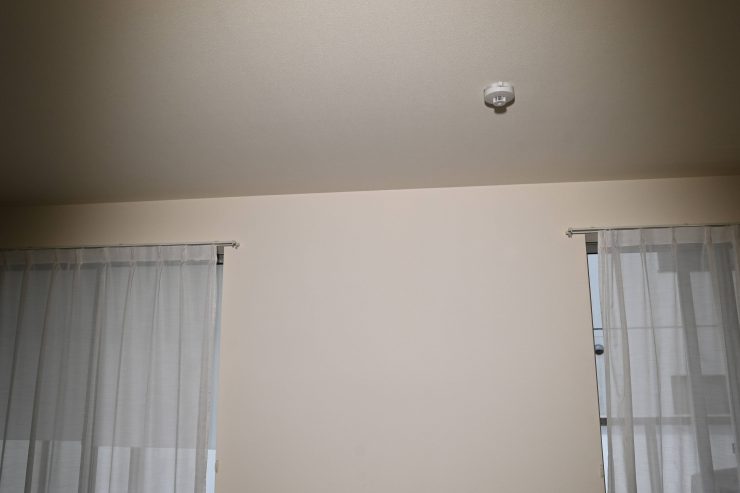
Nanlite Forza 720B & FL-20G Fresnel Attachment 45° 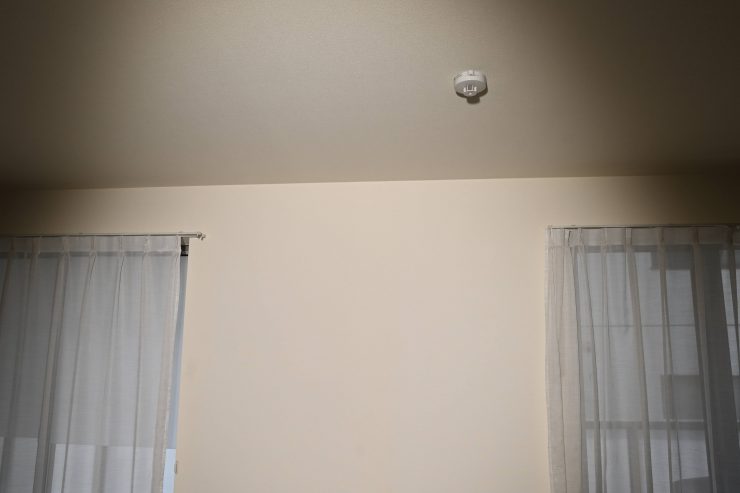
Nanlite Forza 720B & Aputure F10 Fresnel 45°
| DISTANCE FROM CENTER | LUX |
| Dead Center | 7,930 lx |
| 15cm from center | 7,490 lx |
| 30cm from center | 7,420 lx |
| 50cm from center | 7,190 lx |
| 1m from center | 5,540 lx |
Above you can see lux readings taken at the corresponding distances from the center of the beam at a distance of 3m when the Nanlite Forza 720 was used with the FL-20G Fresnel Attachment set at 45°. You can see that the hotspot in the middle is 6.43% brighter than if you take a reading 30cm to the left or right.
The intensity of the light doesn’t really drop off that much until you get around 75cm away from the center of the beam. At 50cm away from center the output was only reduced by 9.33%. At 1m from the center, the output had fallen by 30.13%.
| DISTANCE FROM CENTER | LUX |
| Dead Center | 8,410 lx |
| 15cm from center | 8,380 lx |
| 30cm from center | 8,380 lx |
| 50cm from center | 8,240 lx |
| 1m from center | 6,260 lx |
As a comparison, above you can see lux readings taken at the corresponding distances from the center of the beam at a distance of 3m when the light was used with the Aputure F10 Fresnel set at 45°. You can see that the hotspot in the middle is only 0.35% brighter than if you take a reading 30cm to the left or right.
The intensity of the light doesn’t really drop off that much until you get around 75cm away from the center of the beam. At 50cm away from center the output was only reduced by 2.02%. At 1m from the center, the output had fallen by 25.56%.
When using the Nanlite Forza 720B and the FL-20G Fresnel Attachment or Aputure F10 Fresnel at 45°, the Aputure has a much better and more even spread of light from the center out to 30cm. The beam spread also seems to have better fall off as you move further away from the center.
FL-20G Fresnel Attachment 10°
| DISTANCE FROM CENTER | LUX |
| Dead Center | 17,600 lx |
| 15cm from center | 16,800 lx |
| 30cm from center | 13,600 lx |
| 50cm from center | 4,300 lx |
| 1m from center | 750 lx |
Above you can see lux readings taken at the corresponding distances from the center of the beam at a distance of 3m when the Nanlite Forza 720 was used with the FL-20G Fresnel Attachment set at 10°. You can see that the hotspot in the middle is 22.72% brighter than if you take a reading 30cm to the left or right.
The intensity of the light doesn’t really drop off that much until you get around 30cm away from the center of the beam as you would expect with a 10° beam angle. At 50cm away from the center, the output was reduced by 75.56%. At 1m from the center, the output had fallen by 95.73%.
CC Index & ⊿uv
The CC Index displays the CC correction value and whether any magenta or green need to be added or subtracted. 1 CC corresponds to 035 Kodak CC values or 1/8 Rosco filter values. Any reading less than +1.00 or -1.00 and you’re probably not going to need to make any kind of adjustment. The ⊿uv is the value to show how much this light is away from being an ideal light source (black body radiation = incandescent lamp). As with the CC Index you want this number to theoretically be zero. Kelvin is not a linear value, so we need to convert from Kelvin to MK-1 to compare the values of color temperature. To calculate from Kelvin to Mired is MK-1= 1*1000000/Kelvin. While this may sound confusing, it is the only way of measuring if the Kelvin shift is significant enough to warrant having to use a filter for correction. Below are the results for the Nanlite Forza 720B when used with the FL-20G Fresnel Attachment at 45°.
Kelvin Vs MK-1
| Kelvin | Difference in K | MK-1 | Difference in MK-1 | |
| SET VALUE | 5600K | 0 | 178.57 | 0 |
| ACTUAL READING | 5598K | 2 | 178.63 | -0.06 MK-1 |
This figure might look confusing, but what it tells me is that the light is exceptionally Kelvin color-accurate when used with the FFL-20G Fresnel Attachment at 5600K at 45°. Any MK-1 score that is under -9/9 means you wouldn’t have to use any color correction gels. The score of -0.06 MK-1 is the best I have seen from any light I have tested, period.
| Kelvin | Difference in K | MK-1 | Difference in MK-1 | |
| SET VALUE | 5600K | 0 | 178.57 | 0 |
| ACTUAL READING | 5336K | 264 | 187.40 | -8.83 MK-1 |
As a comparison, above is those same results when the Nanlite Forza 720B is used with the Aputure F10 Fresnel.
CC INDEX & ⊿uv
| CC INDEX | ⊿uv | |
| 5600K | 0 | 0.0003 |
These results show me that the light is exceptionally Kelvin color accurate with the Fresnel when used at 5600K
| CC INDEX | ⊿uv | |
| 5600K | 0 | 0.0012 |
As a comparison, above is those same results when the Nanlite Forza 720B is used with the Aputure F10 Fresnel.
Color Rendering
Nanlite Forza 720B & FL-20G Fresnel Attachment
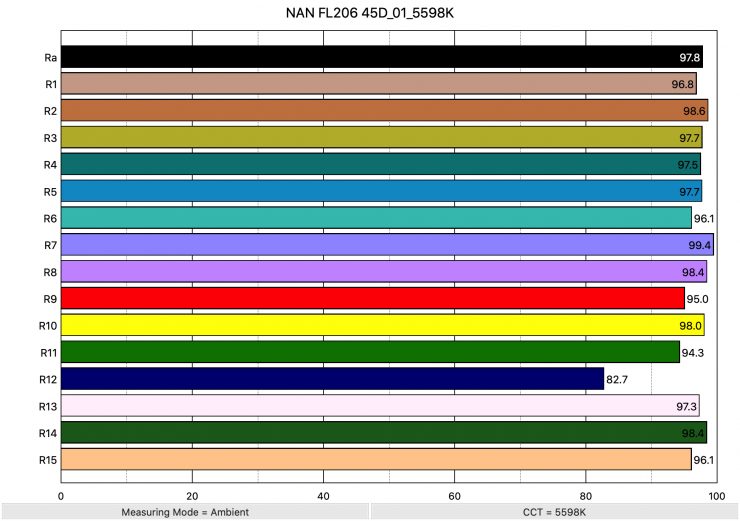
So now that we have seen how much output the Nanlite Forza 720B & FL-20G Fresnel Attachment produces, how does it perform when it comes to replicating accurate colors. Above you can see that when the light was set at 5600K it recorded an average CRI (R1-R8) of 97.8 and an extended CRI (R1-R15) of 96.26. For replicating accurate skin tones it recorded 95 R9 (red), 97.3 for R13 (closest to caucasian skin tones), and 96.1 for R15 (closest to Asian skin tones). These are outstanding results.
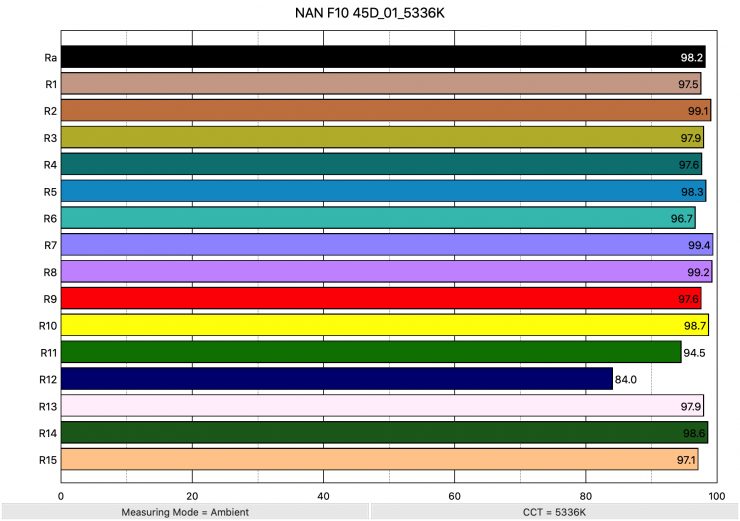
As a comparison, above you can see that when the light was set at 5600K and used with the Aputure F10 Fresnel it recorded an average CRI (R1-R8) of 98.2 and an extended CRI (R1-R15) of 96.94. For replicating accurate skin tones it recorded 97.6 R9 (red), 97.9 for R13 (closest to caucasian skin tones), and 97.1 for R15 (closest to Asian skin tones). These are outstanding results and they were actually a little bit better than when the light is used with Nanlite’s own FL-20G Fresnel Attachment.
| CRI | EXTENDED CRI | R9 | R13 | R15 | |
| Nanlite FL-20G Fresnel Attachment | 97.9 | 96.26 | 95.0 | 97.3 | 96.1 |
| Aputure F10 Fresnel | 98.2 | 96.94 | 97.6 | 97.9 | 97.1 |
Above you can see a direct comparison between the two Fresnels.
TM-30
TM-30 is a relatively new color rendering standard that was developed to deal with the limitations of CRI. TM-30 looks at 99 individual colors. These 99 colors are categorized into seven groups: nature, skin color, textiles, paints, plastics, printed material, and color systems.
TM-30 scores go from 0 – 100. The higher the score, the more accurate a light is at producing colors. Any TM-30 Rf score in the ’90s is considered to be good. What is interesting and something that you need to be very aware of is that two separate light sources with the exact same CRI scores can render colors very differently. A light with a high CRI rating could have a low TM-30 score. Conversely, a light with a good TM-30 score could have a bad CRI score.
Now, there are two measurements associated with TM-30, Rf and Rg.
- Rf (Color Fidelity)
- Rg (Color Gamut)
With Rg value, a score below 100 indicates that the light source renders colors with less saturation than the reference source. So ideally you want this score to be above 100.
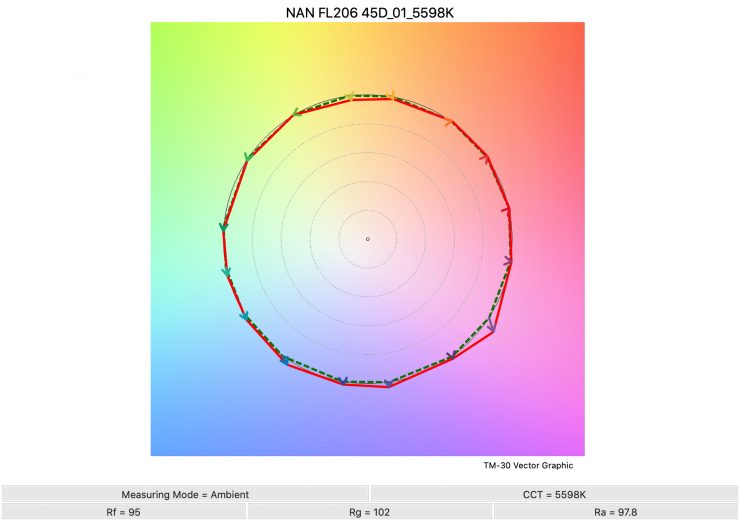
Above you can see the scores for the Nanlite Forza 720B and FL-20G Fresnel Attachment at 5600K. It recorded a TM-30 Rf score of 95 and a TM-30 Rg score of 102.
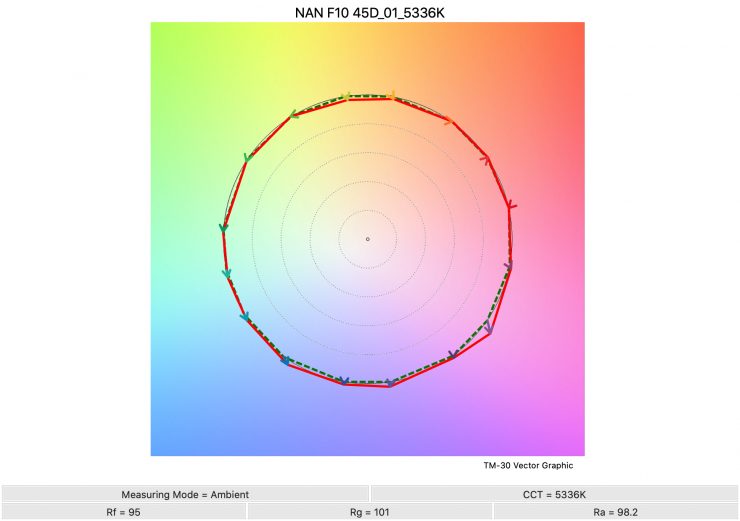
As a comparison, above you can see the scores for the Nanlite Forza 720B and Aputure F10 Fresnel Attachment at 5600K. It recorded a TM-30 Rf score of 95 and a TM-30 Rg score of 101.
There is no real difference between the two when it comes to TM-30 scores.
SSI
SSI (Spectral Similarity Index) was developed by the Sci-Tech Council of the Academy. SSI gives me the ability to set any light as a standard, or use predefined standards (such as CIE D55), and then give other lights an SSI score based upon how well they will match standards such as CIE D55 measure spectral response and compare it directly against an ideal light source.
SSI is a much better way to judge an LED light than CRI or TLCI.
SSI is useful to see how well different lights will play together. As the Sekonic C-800 Spectromaster can measure SSI, I decided to test out the Nanlite Forza 720B and FL-20G Fresnel Attachment at 5600K to see how they performed.
Nanlite Forza 720B & FL-20G Fresnel Attachment
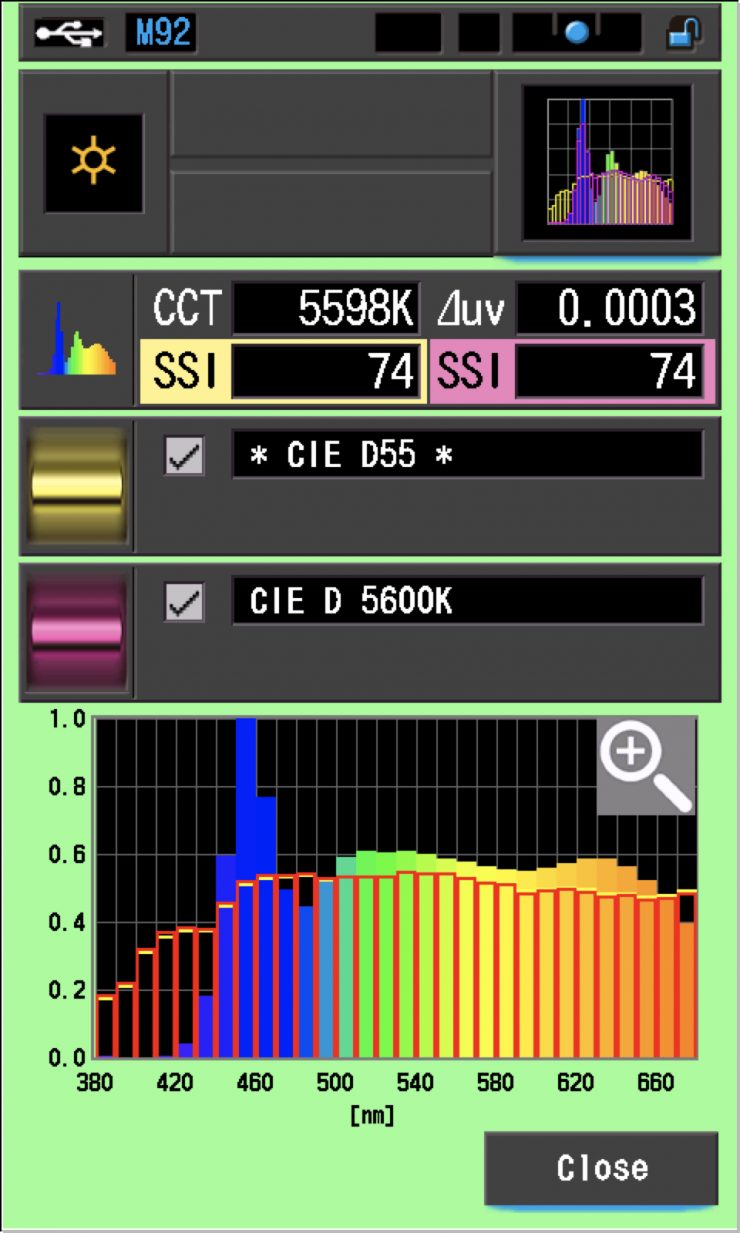
The scores show that the light does a very good job of accurately replicating a CIE D55 source. A score in the low to mid-70s is very typical for a 5600K LED light.
The main reason we want to record SSI scores is so we can see how well they match with other lights. I was curious to see how well the Nanlite Forza 720B and FL-20G Fresnel Attachment matched the Nanlite Forza 720B with the Aputure F10 Fresnel. Below you can see the results.
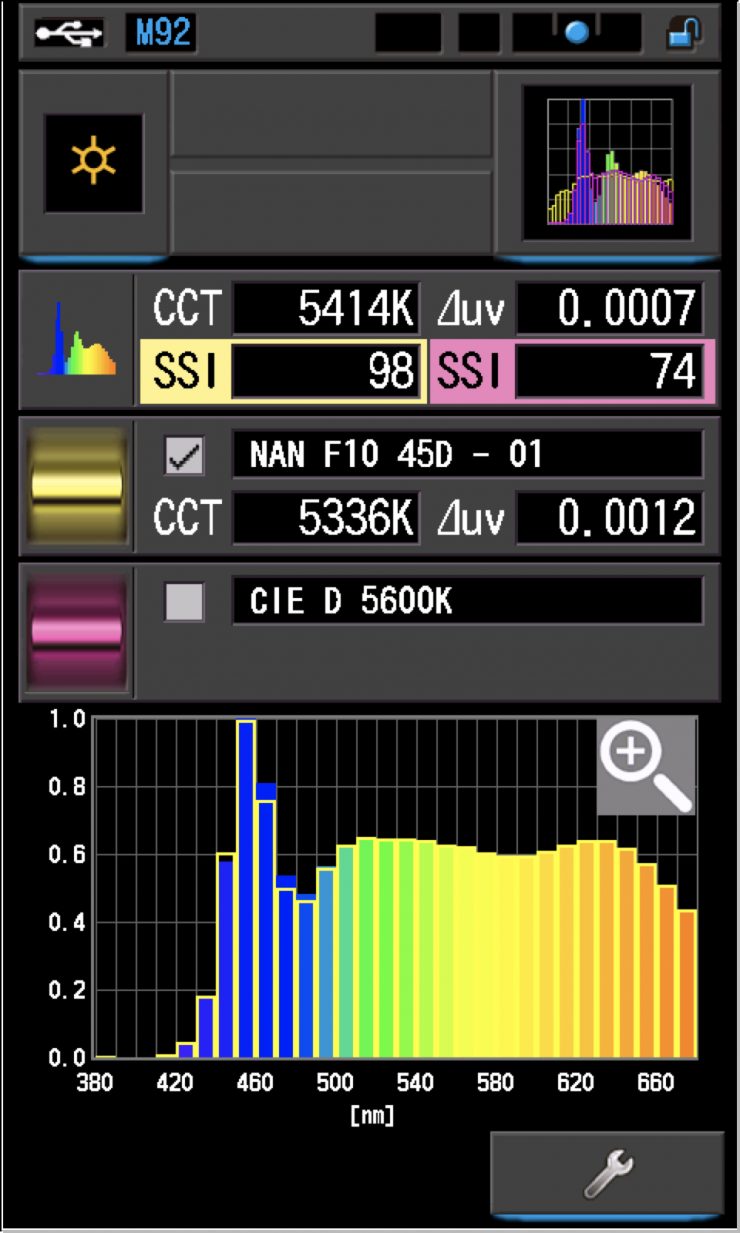
As you can see they are almost a perfect match. This comes as no surprise as the exact same light running a different optical attachment isn’t going to stray too far off the track.
Being able to measure SSI in advance and compare different lights you may be using together is a great way of finding out what lights will work together and what adjustments need to be made.
Spectral Distribution
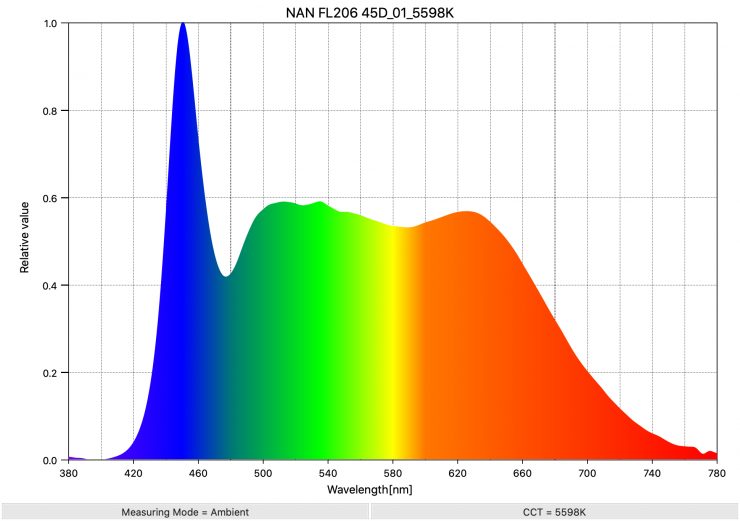
Above you can see the spectral distribution of the Nanlite Forza 720B and the FL-20G Fresnel Attachment when used at 5600K. The spectral distribution is not overly full, but then again this is not an RGBWW fixture.
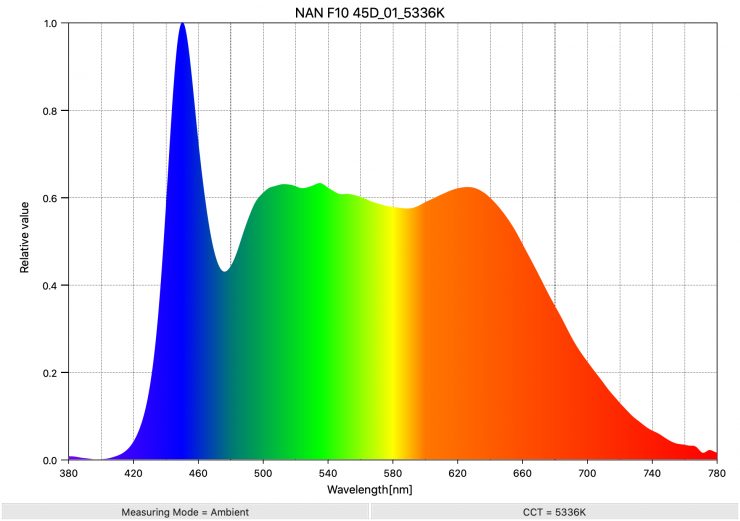
Above you can see the spectral distribution of the Nanlite Forza 720B and Apture F10 Fresnel when used at 5600K. This is an interesting result because the spectral distribution is a little fuller when using the Aputure Fresnel instead of the Nanlite.
Real-World Usability
Both the FL-20G Fresnel Attachment and the Aputure F10 Fresnel are more than capable of replicating sunlight coming through a window when used with the Forza 720B.
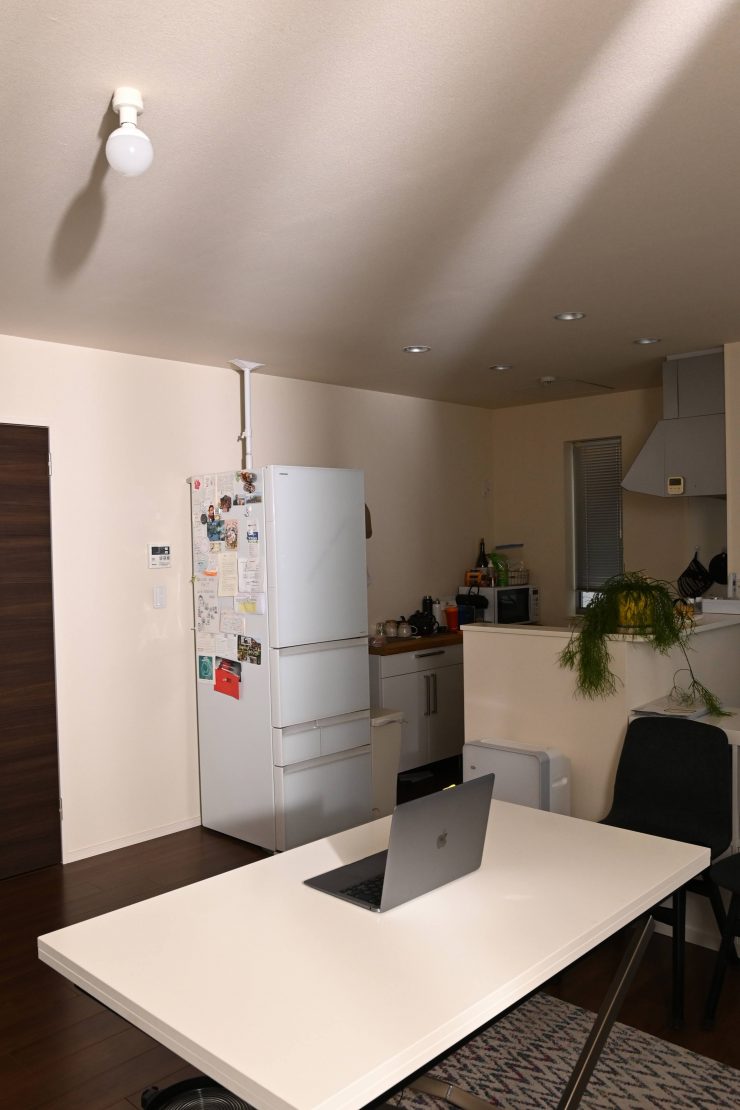
FL-20G Fresnel Attachment 45° 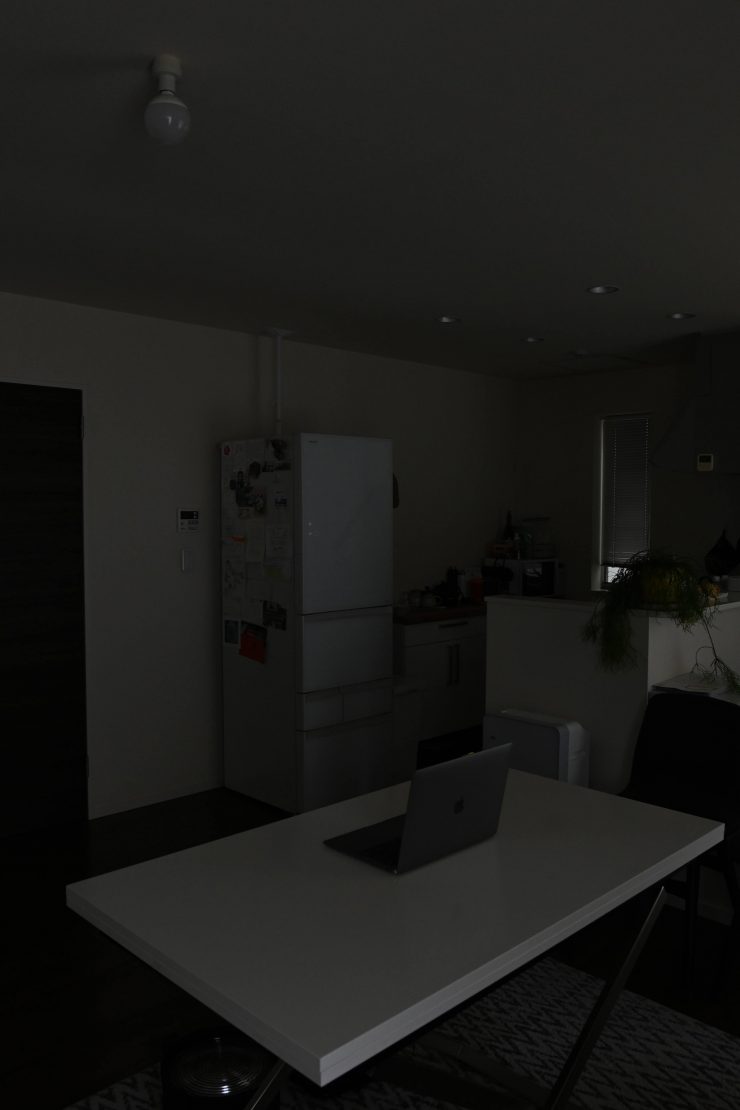
No light
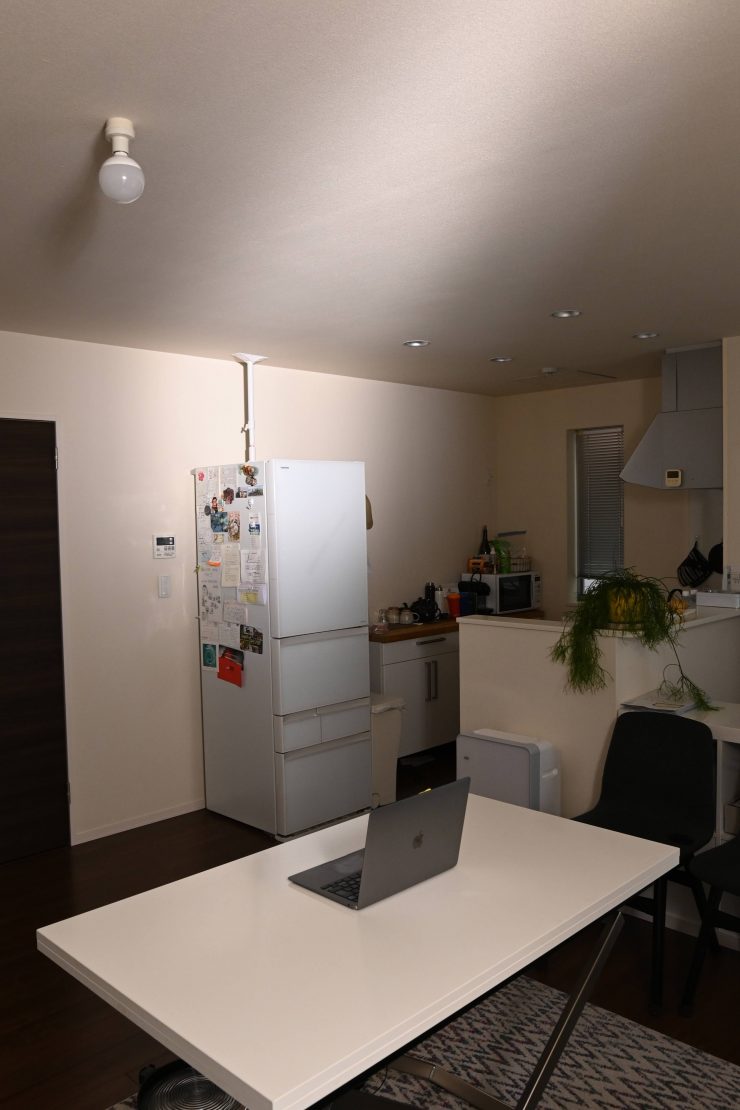
FL-20G Fresnel Attachment 10° 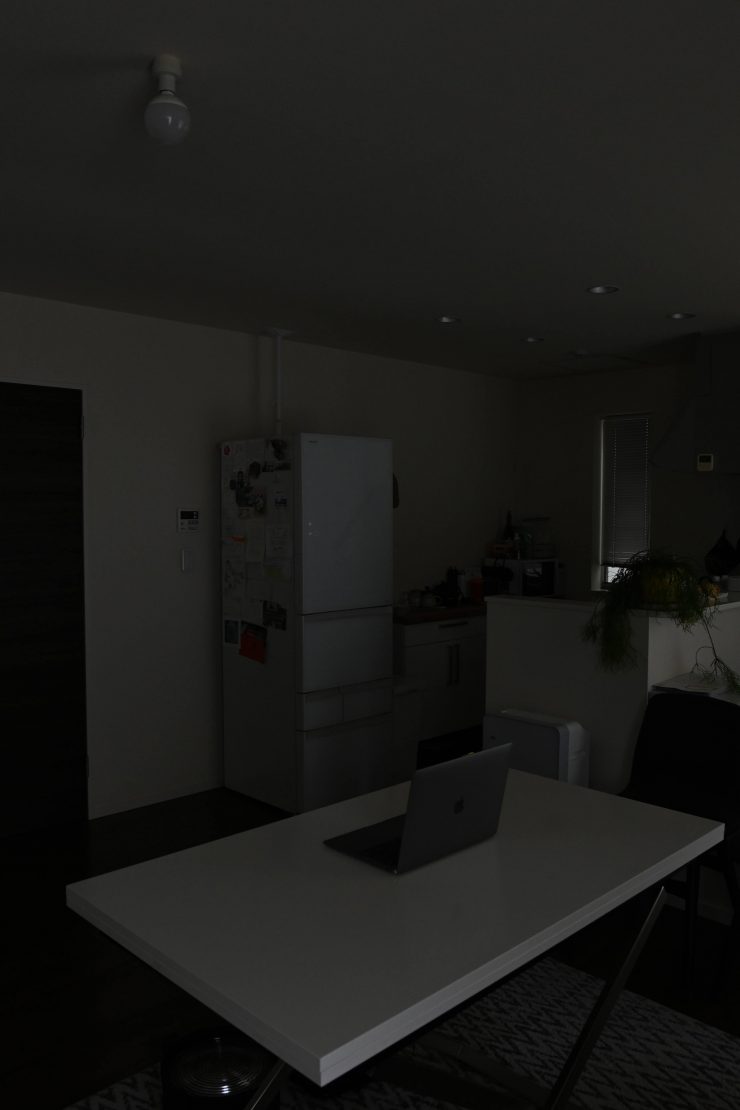
No light
Below you can see the same test done with the Aputure F10 Fresnel
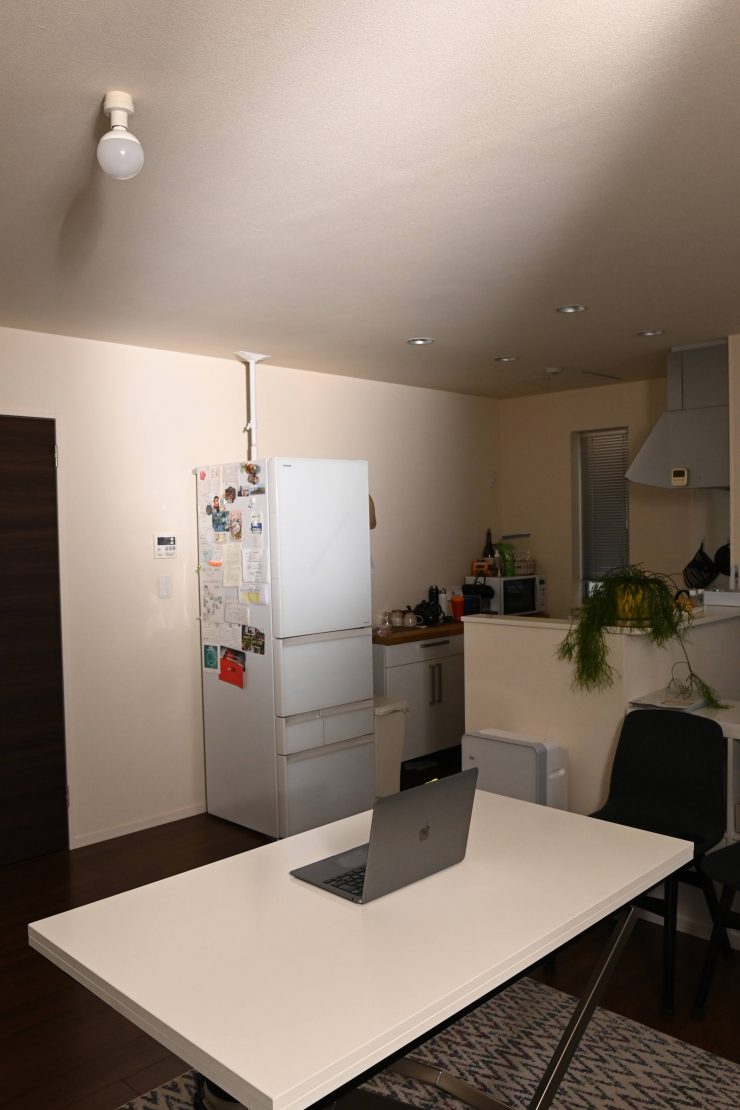
F10 Fresnel at 45° 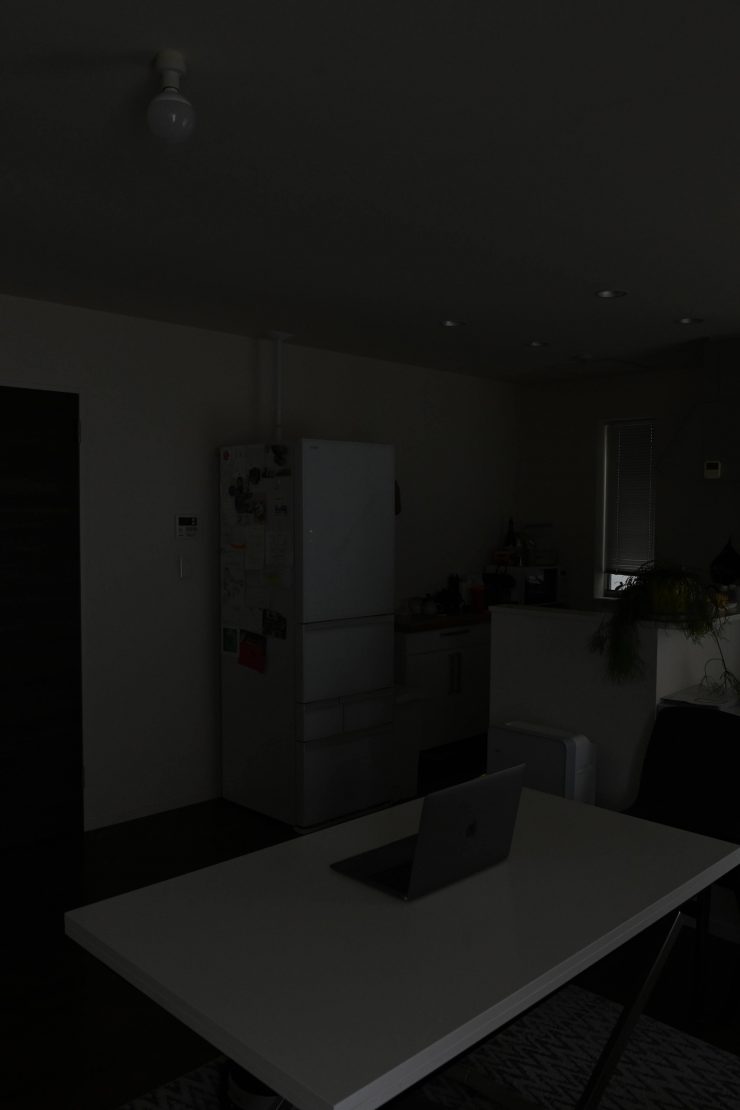
No light
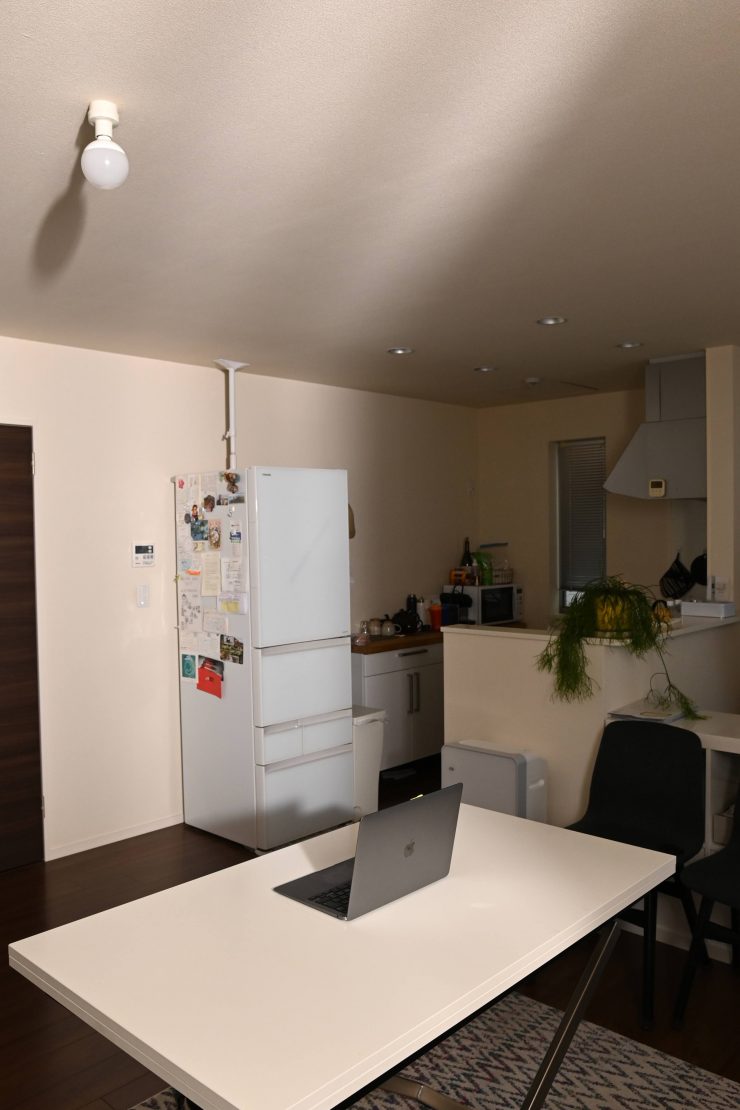
F10 Fresnel at 15° 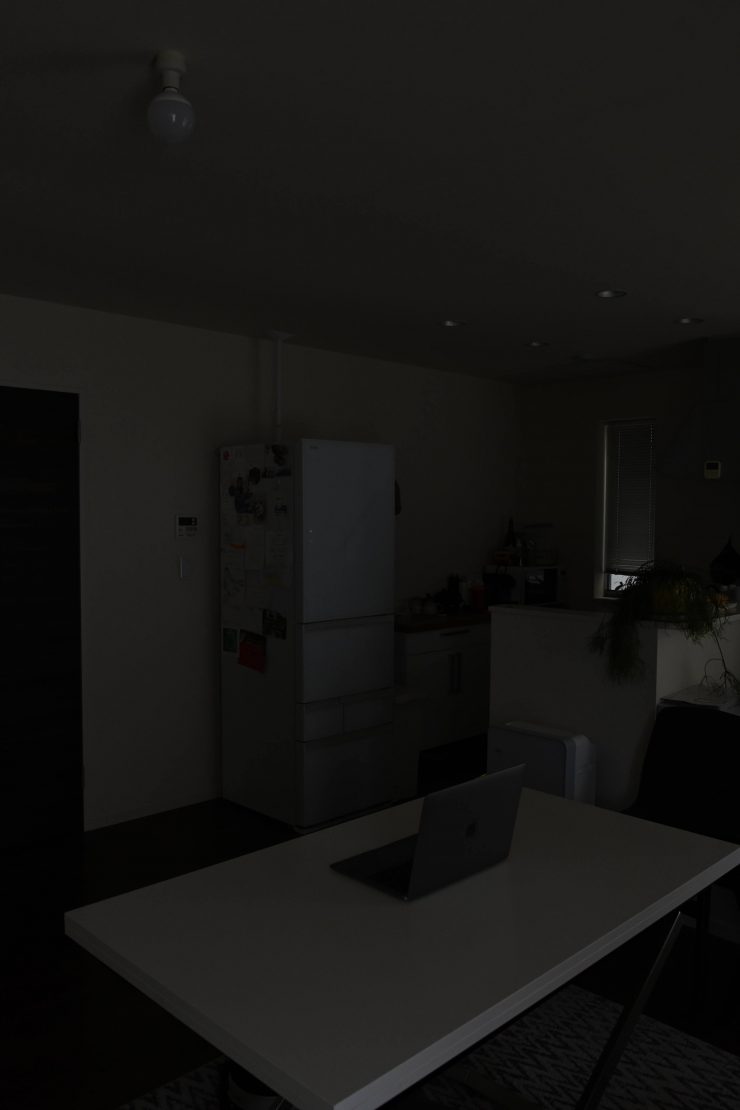
No light
While both Fresnel options provide good results, the Nanlite FL-20G Fresnel Attachment is easier to use because it is physically smaller and lighter. Yes, you get more output when using the Aputure F10 Fresnel with the Nanlite Forza 720/720B, however, it does seem to alter the Kelvin color temperature of the light.
The Aputure F10 does have more of a softer fall off than the Nanlite FL-20G Fresnel Attachment, but the Nanlite does seem to be able to produce sharper edges on shadows.
Price
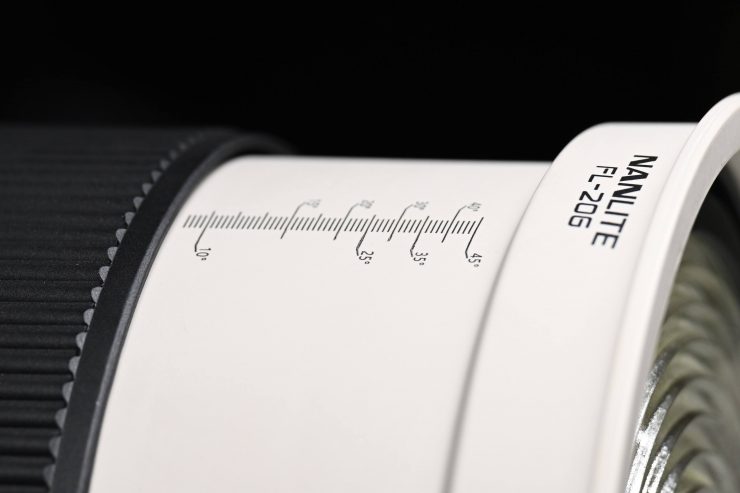
The Nanlite FL-20G Fresnel Attachment retails for $159 USD which makes it excellent value for money especially considering the fact that it comes with barndoors.
The Aputure F10 Fresnel is $219 USD and the barndoors are an additional $139 USD.
Conclusion
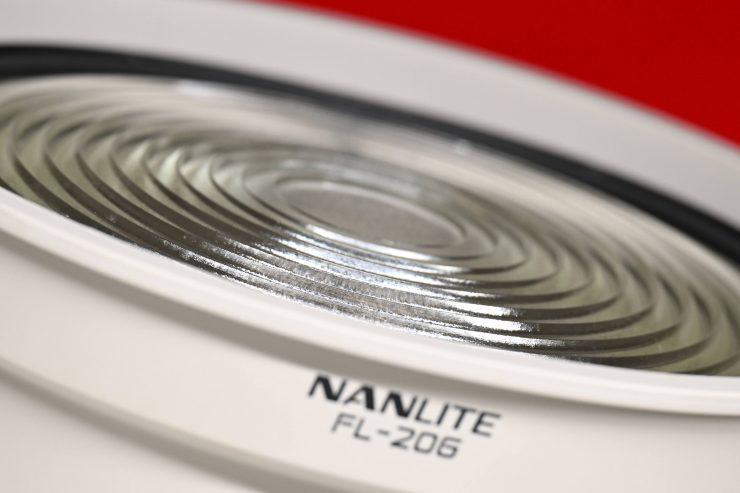
The Nanlite FL-20G Fresnel Attachment is well built, well thought out, and most importantly, it adds a lot of versatility if you own a Forza 720/720B.
It is very well priced for what it does and if you need a lot of output for your Forza 720/720B then it is certainly up to the task. The Fresnel attachment doesn’t alter the Kelvin color temperature of the light which is nice to see.
If you are a solo operator or traveling a lot, the Nanlite FL-20G Fresnel Attachment is going to be a better option than the Aputure F10 Fresnel, simply because it is smaller and lighter.
In saying all that, the Aputure F10 Fresnel still works really well with the Nanlite Forza 720/720B and it allows you to achieve similar results to a lot more power-hungry and larger HMIs for a lot less money. Considering that the Aputure F10 Fresnel wasn’t designed to be used on the Nanlite, it is nice to see just how well it works and it is certainly a viable option if you would prefer it over Nanlite’s own FL-20G Fresnel Attachment.
For $159 USD, the Nanlite FL-20G is certainly worth getting if you own a Nanlite Forza 720/720B.

